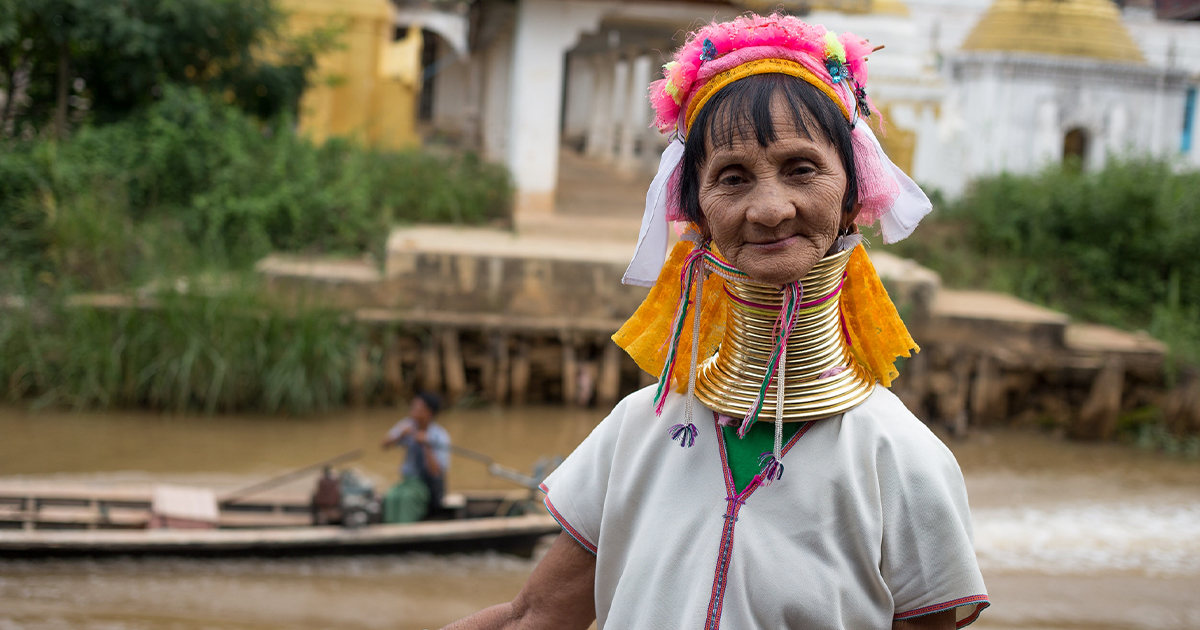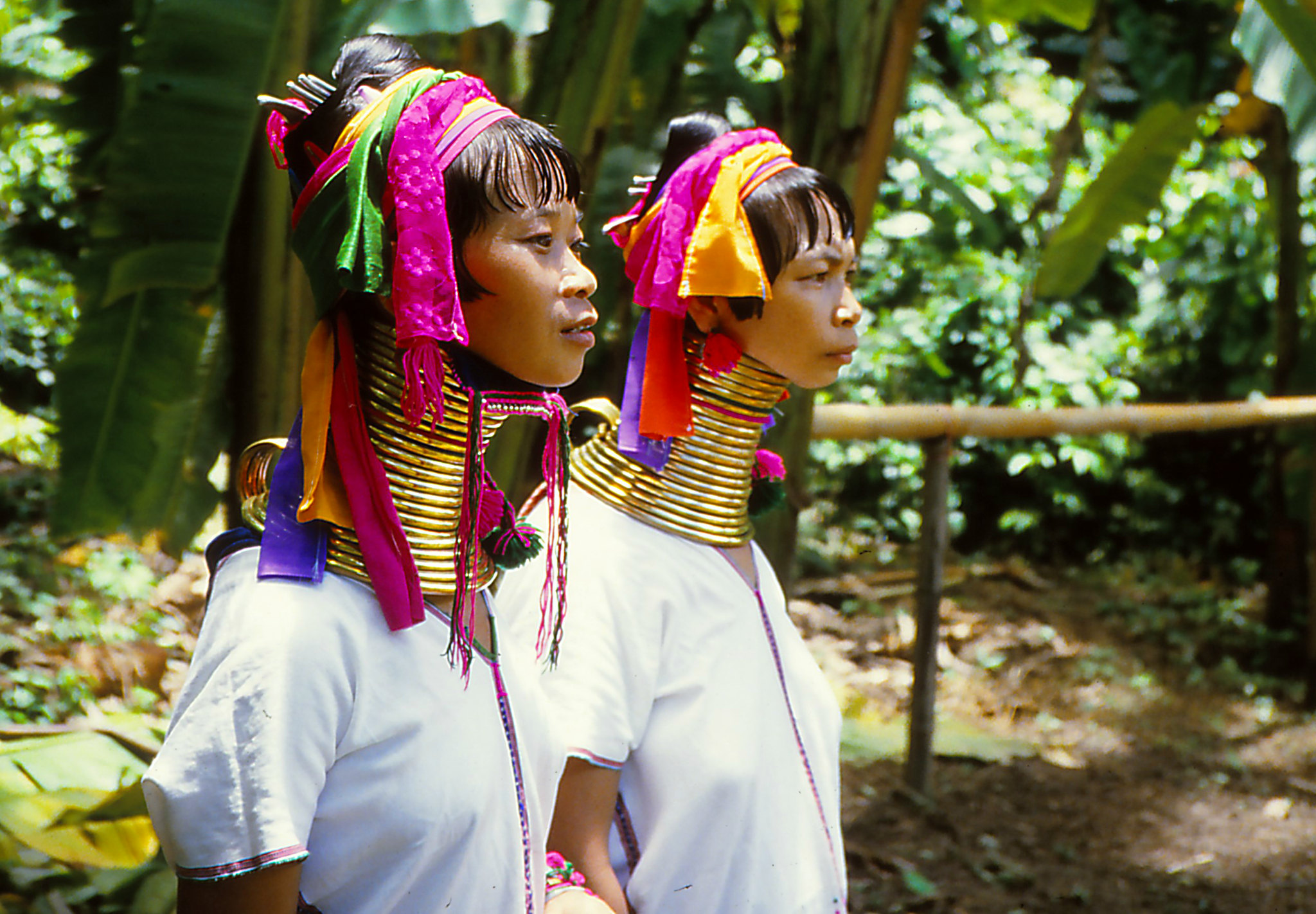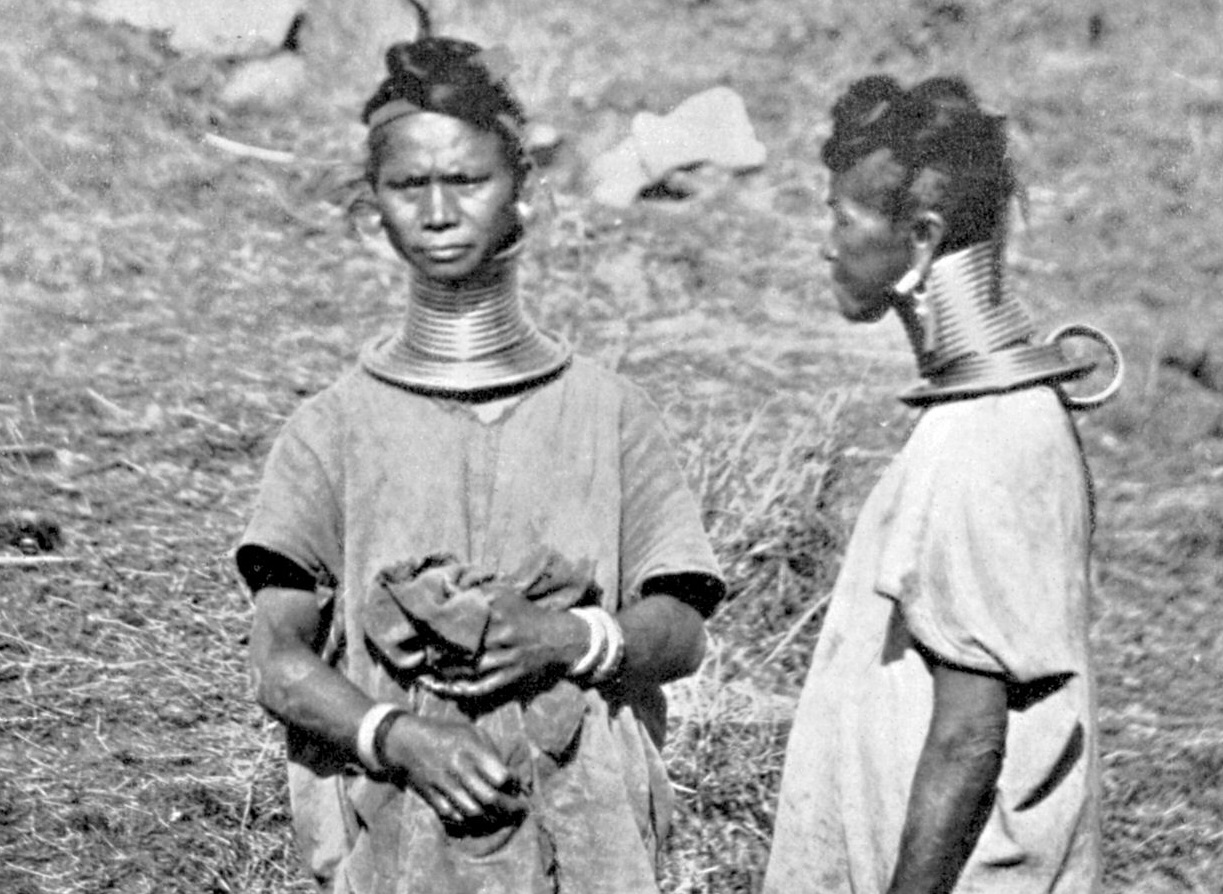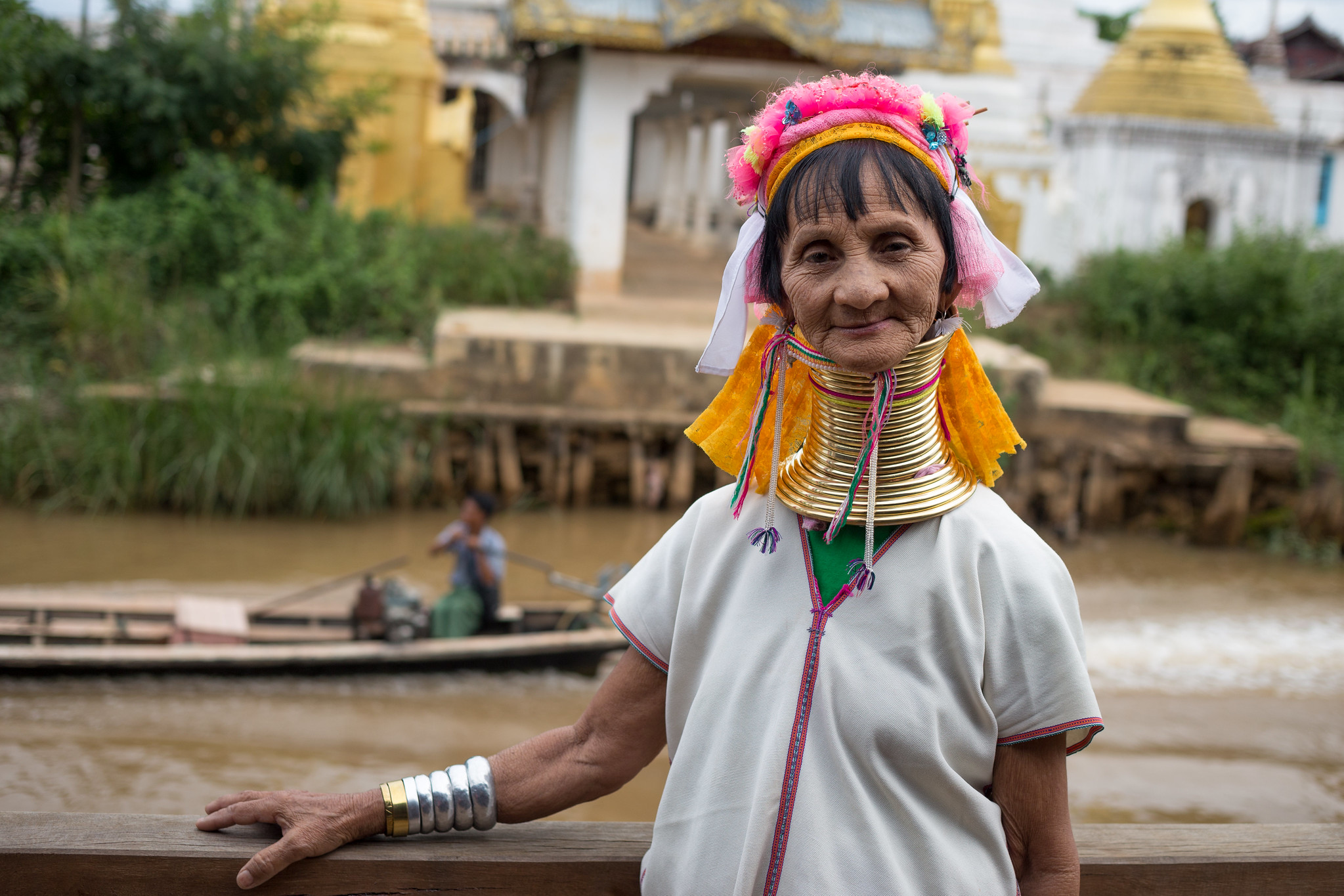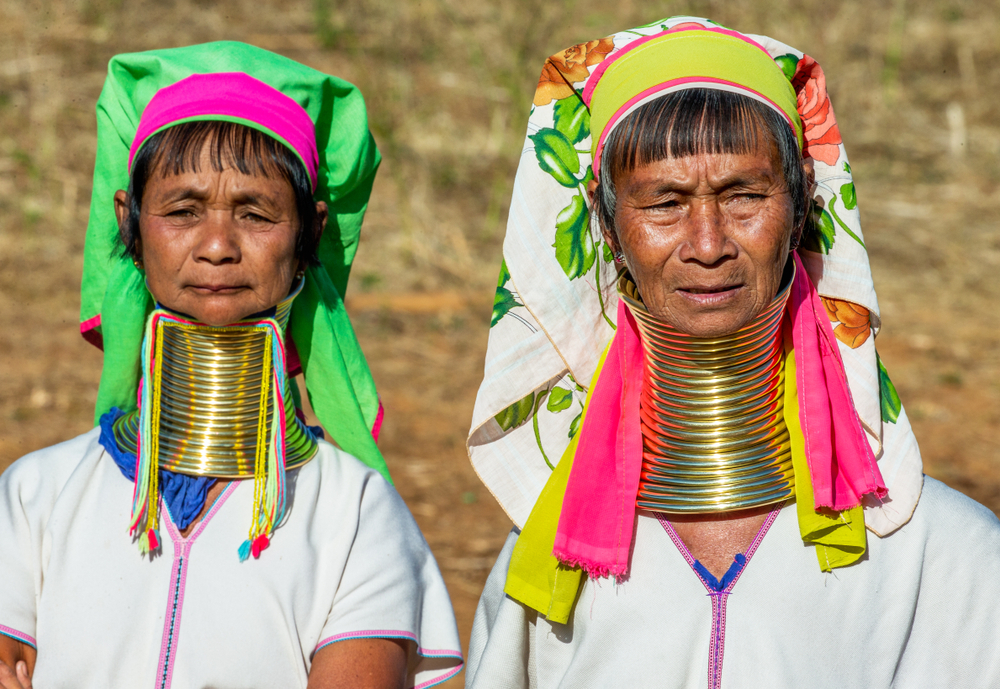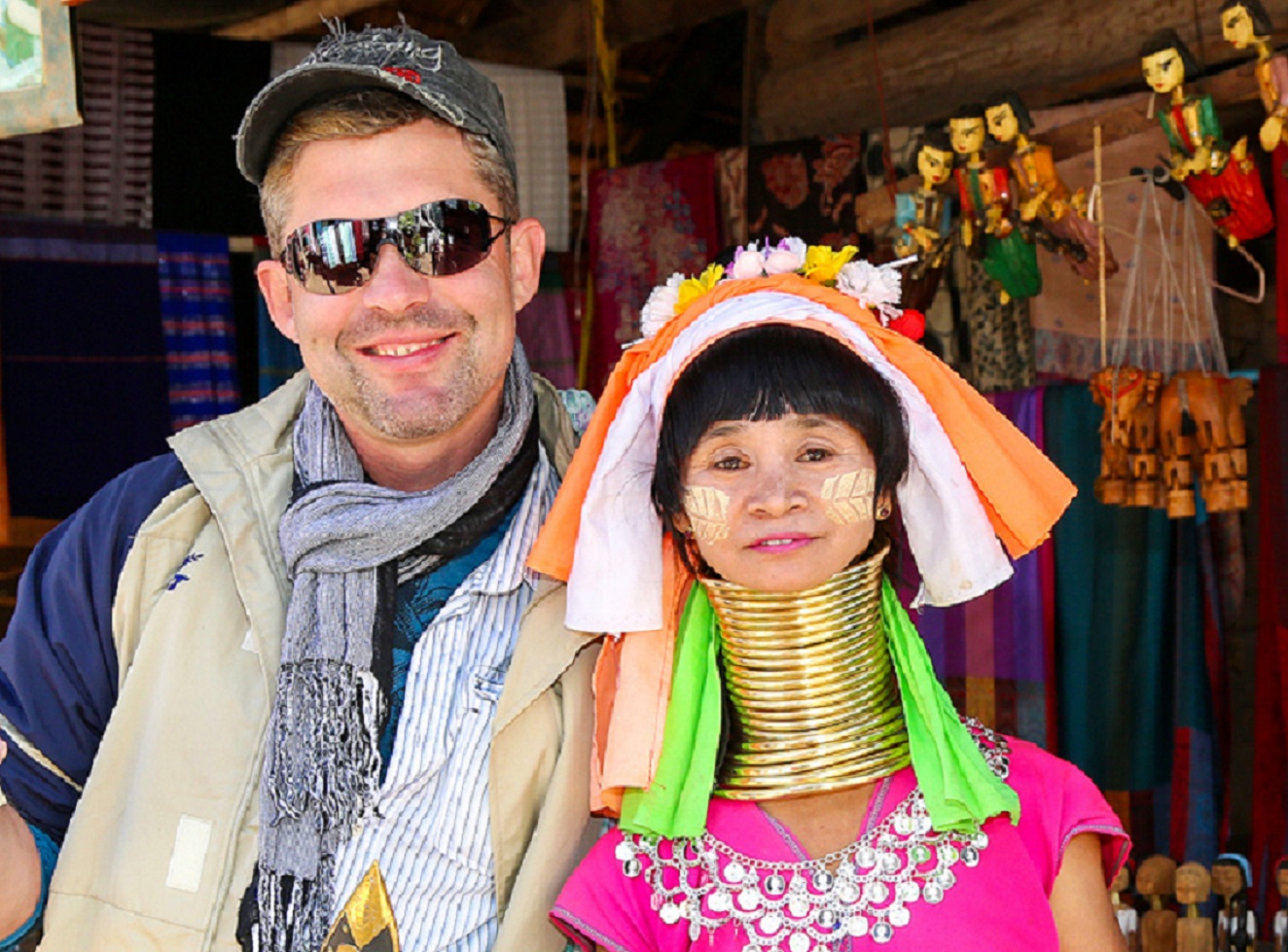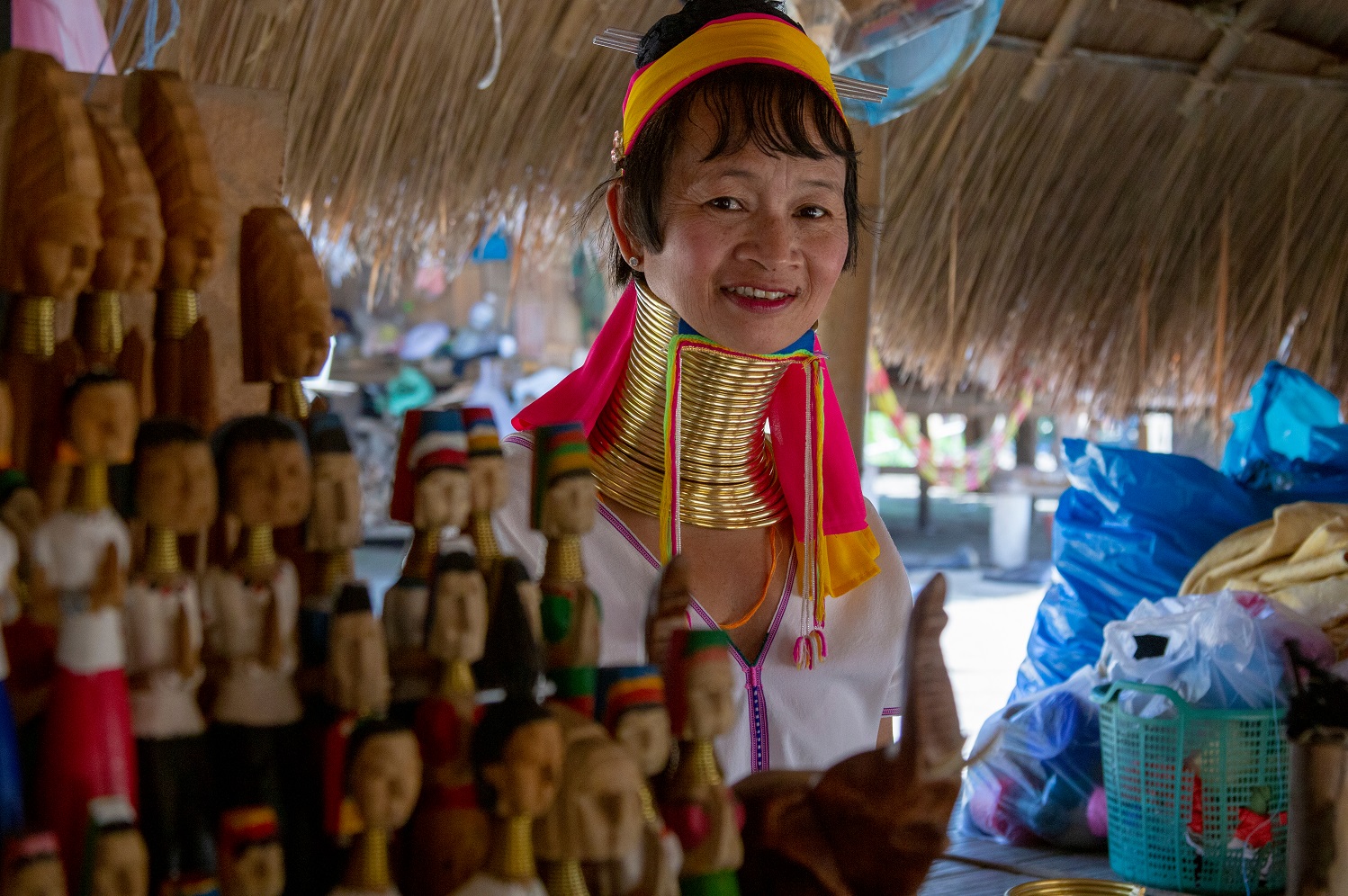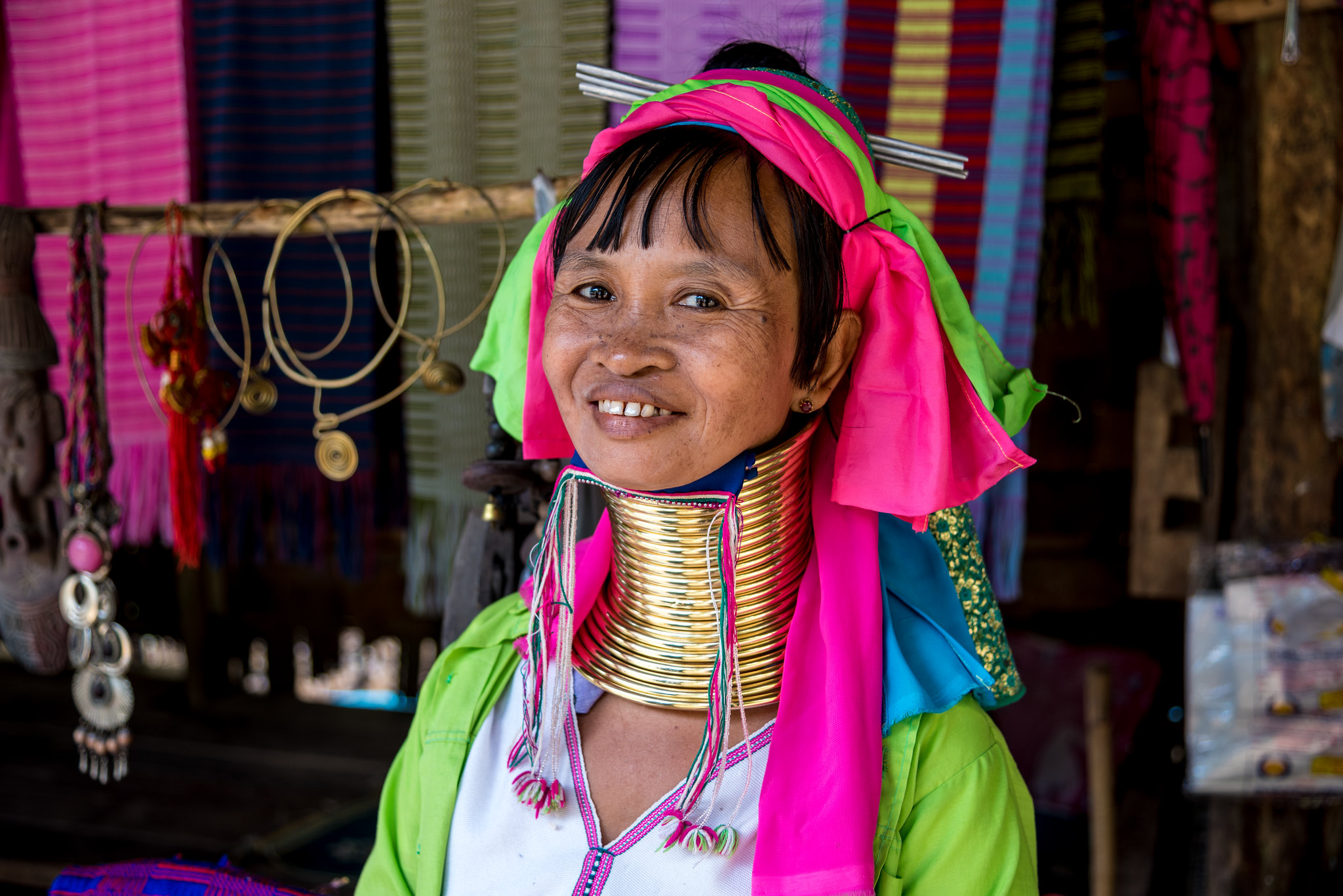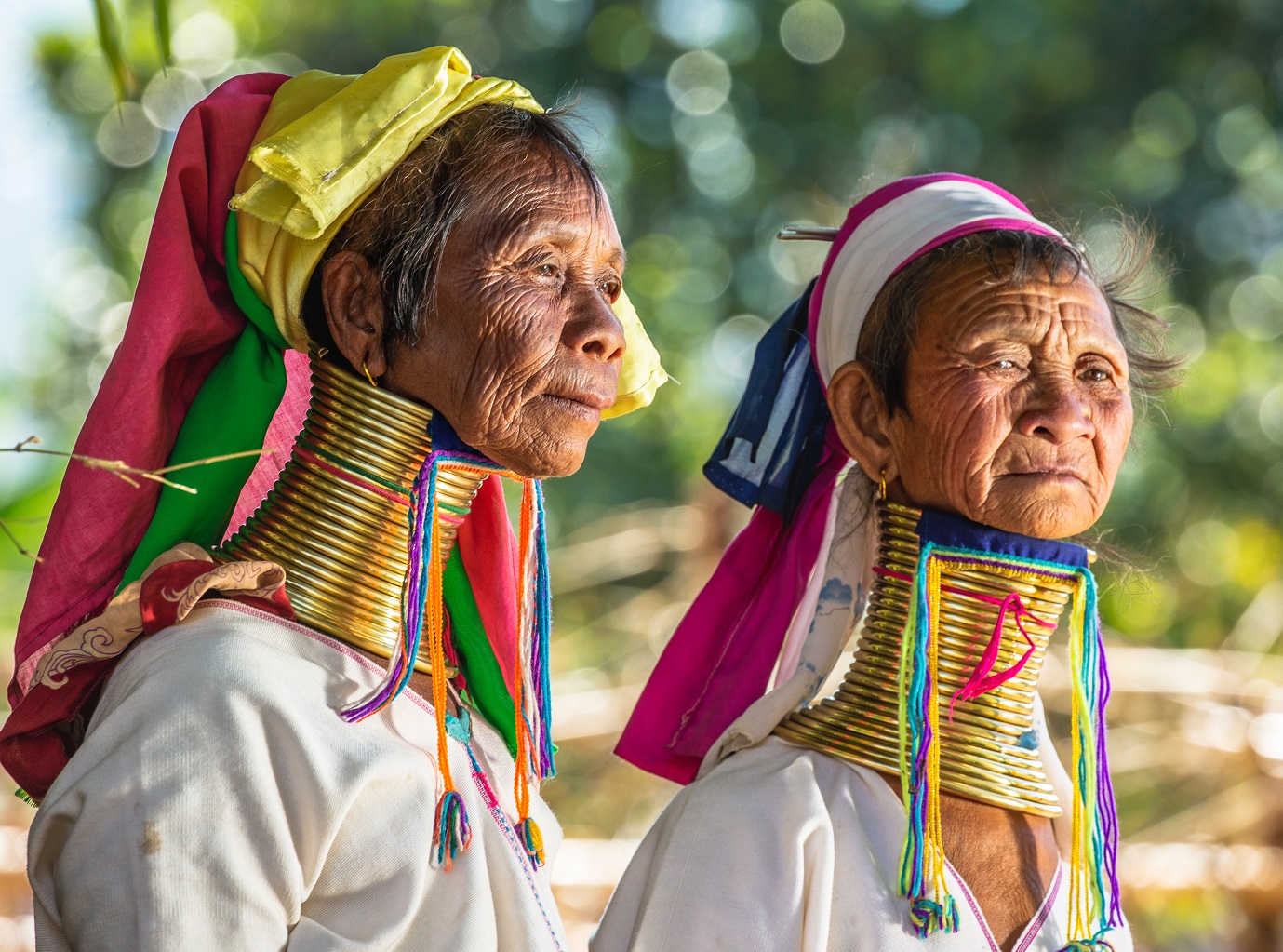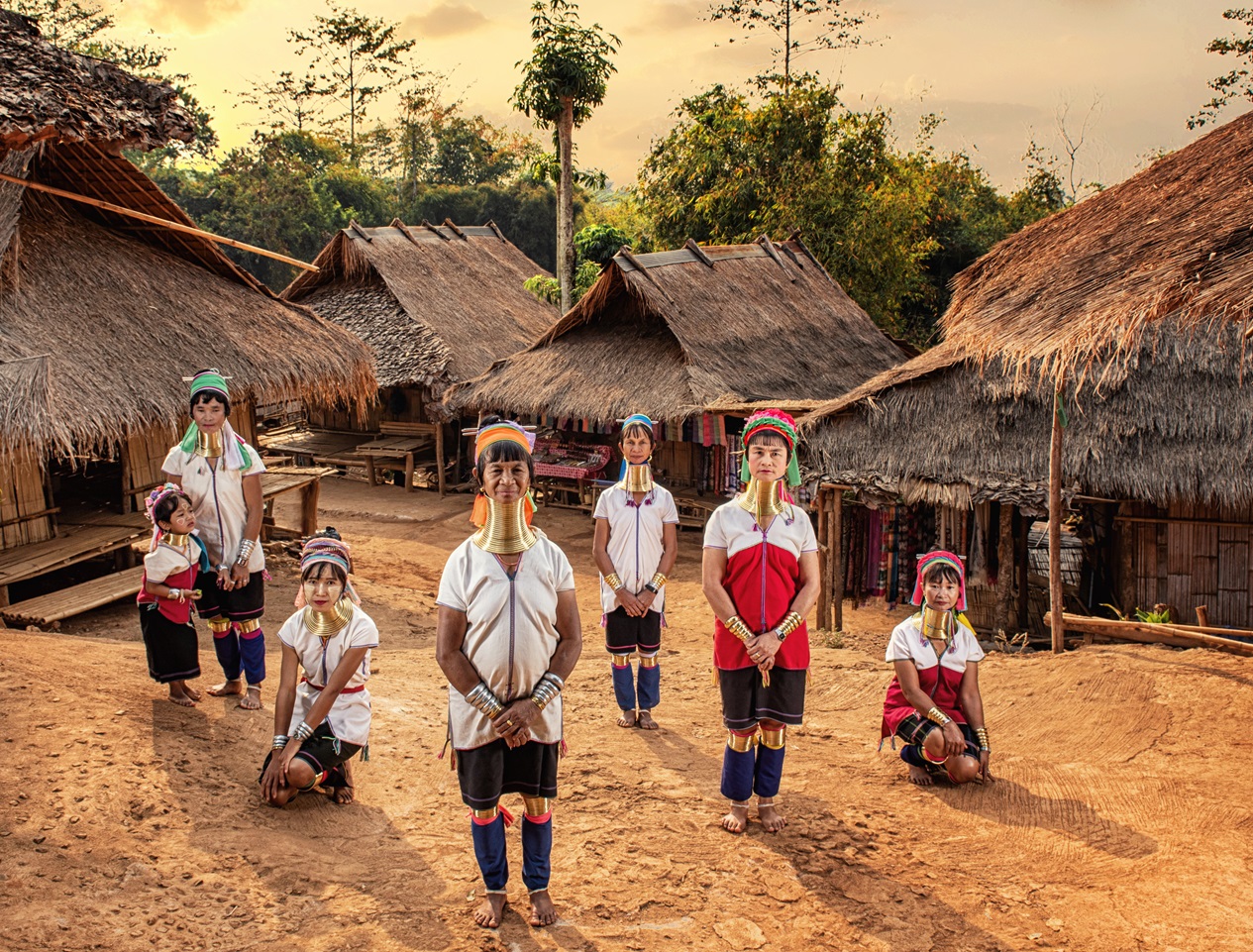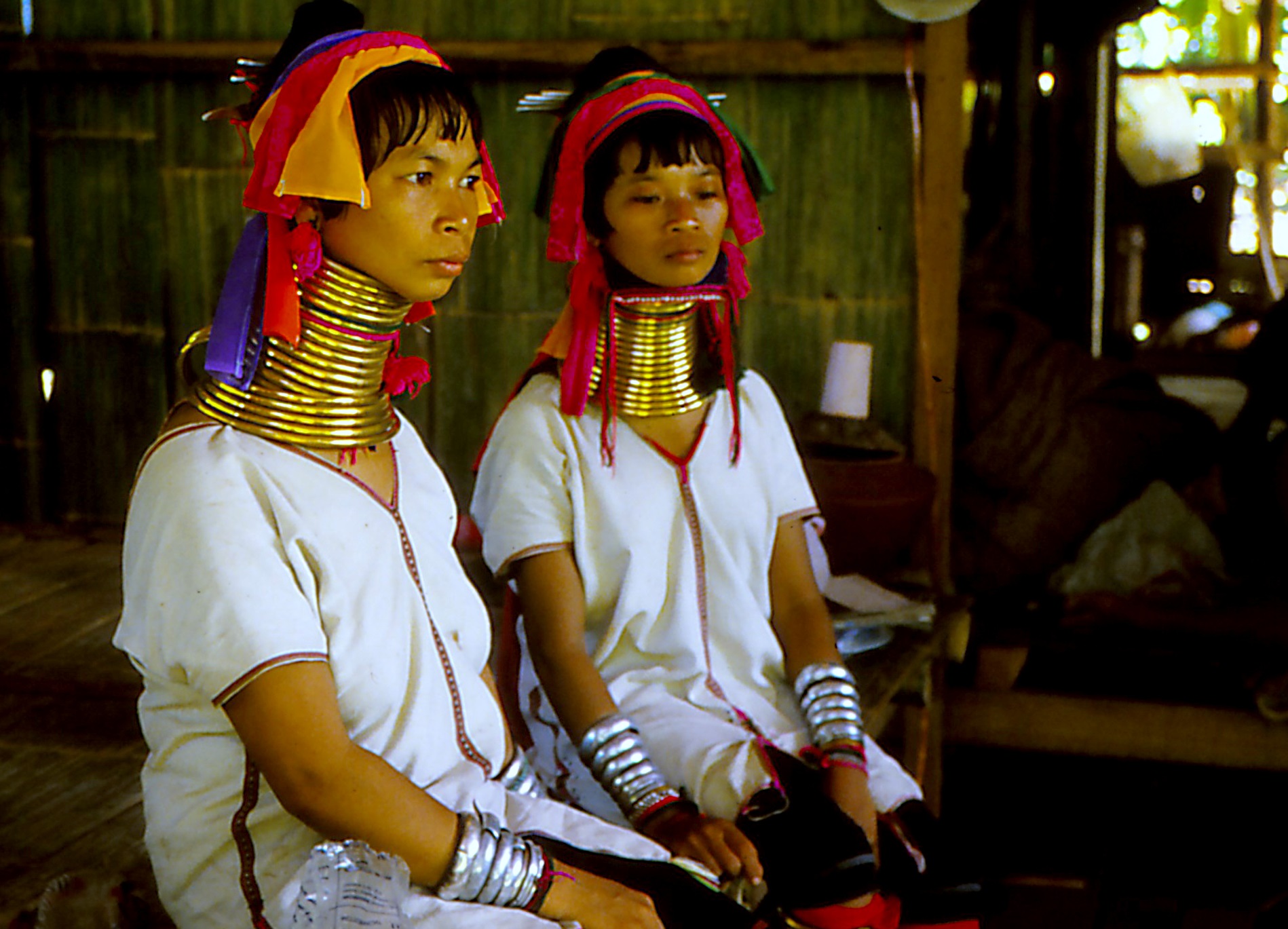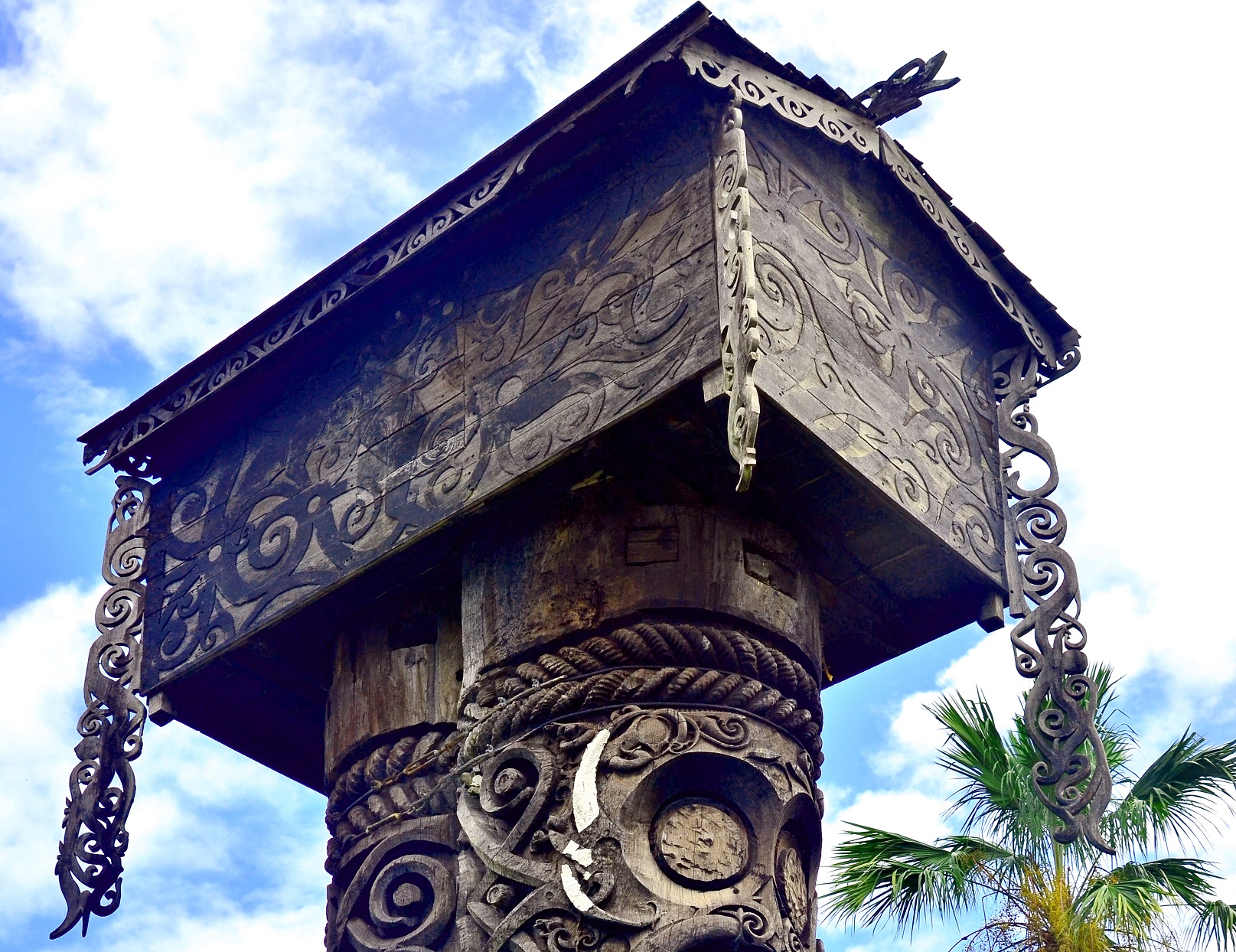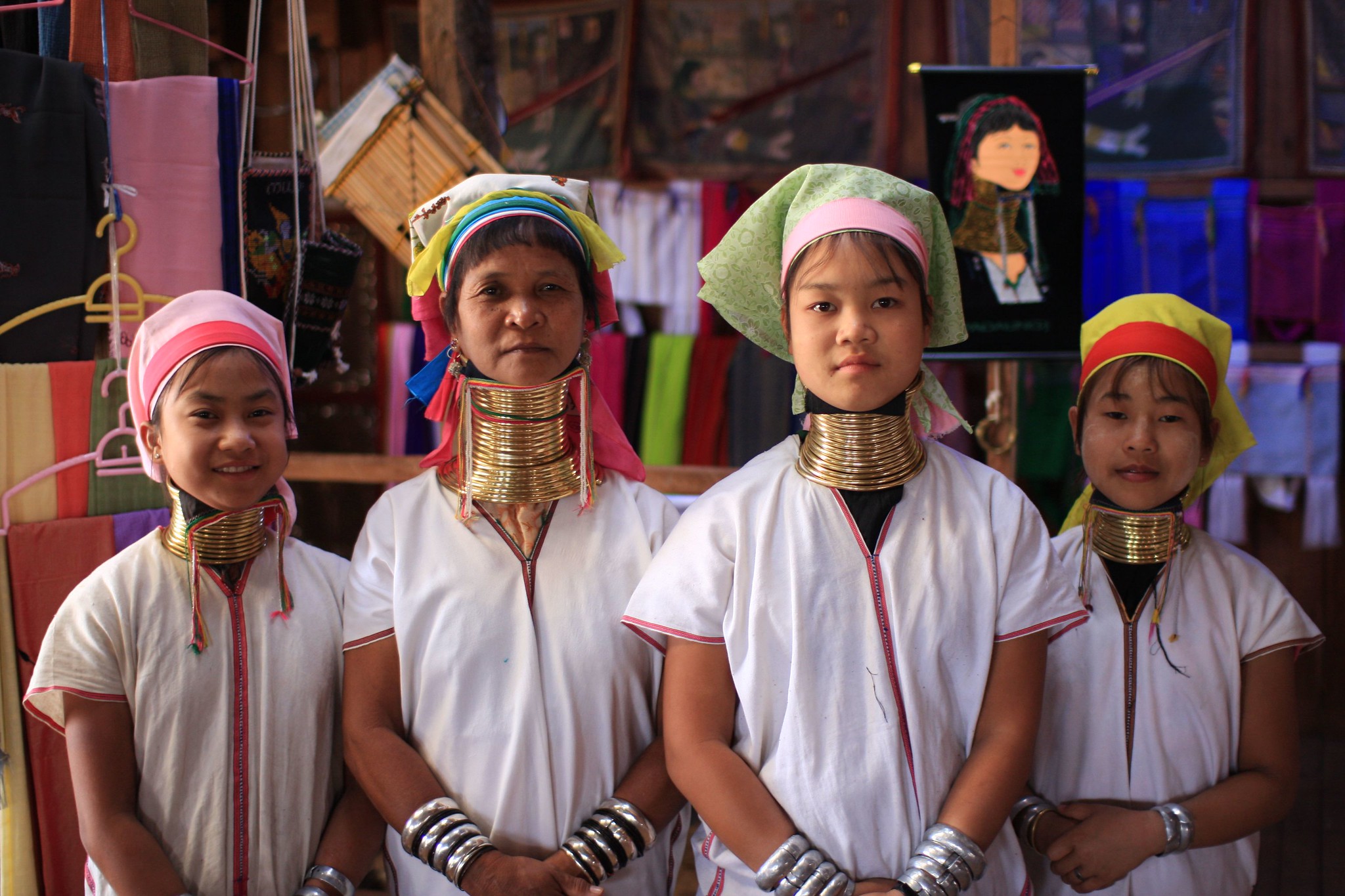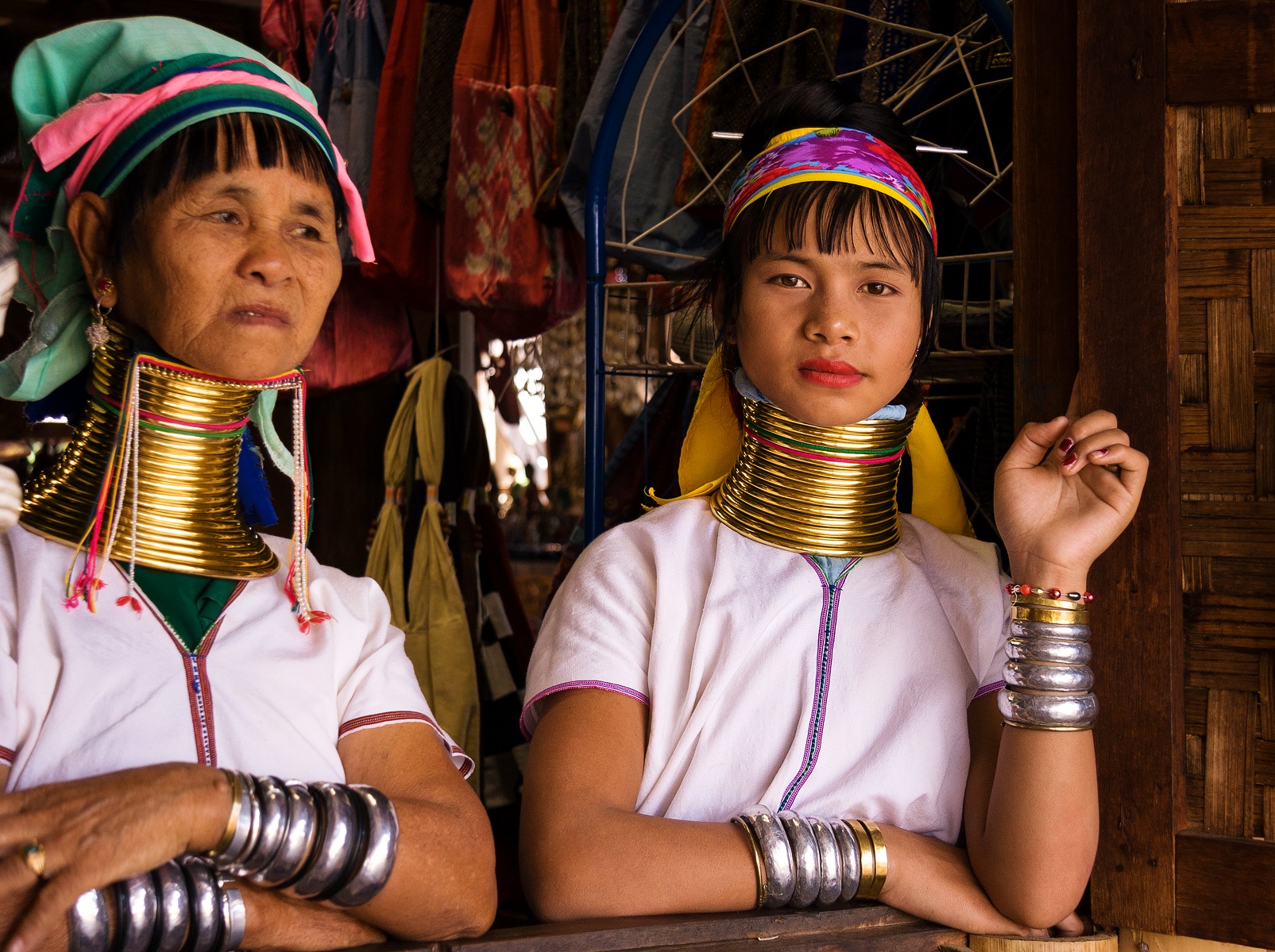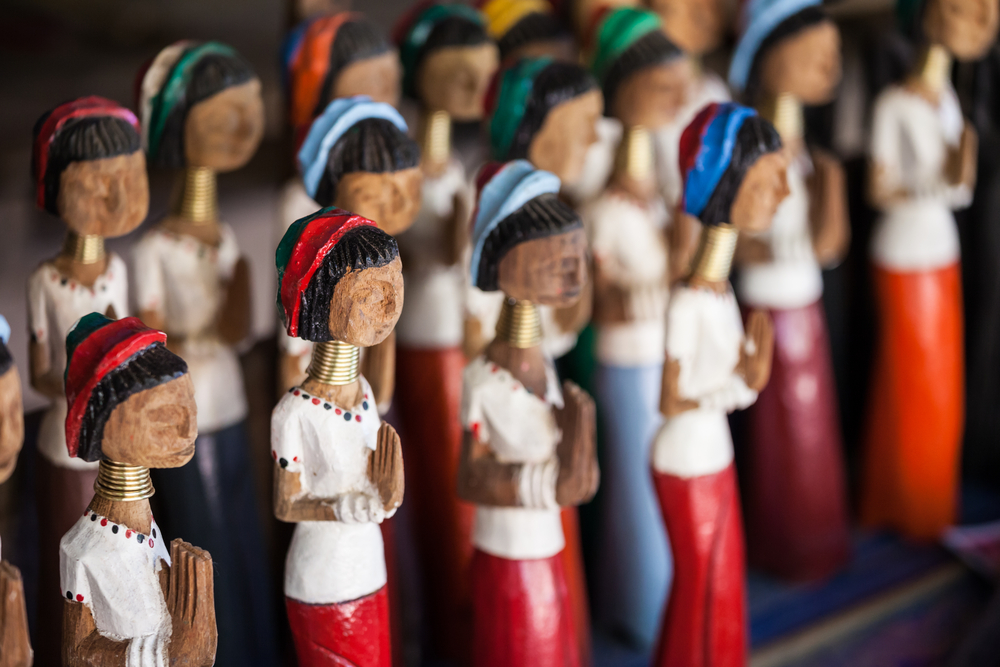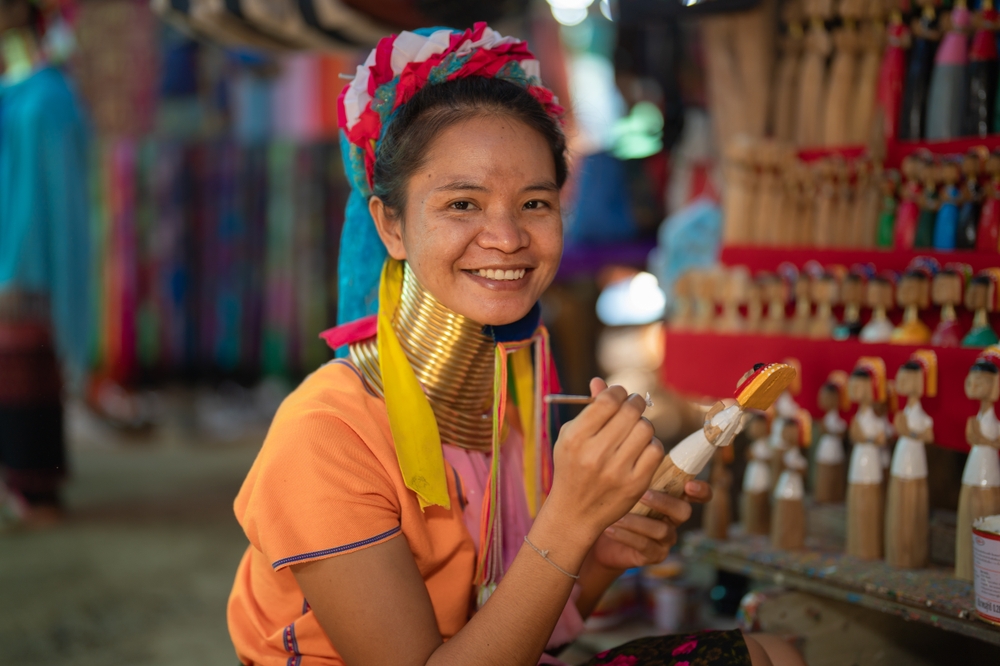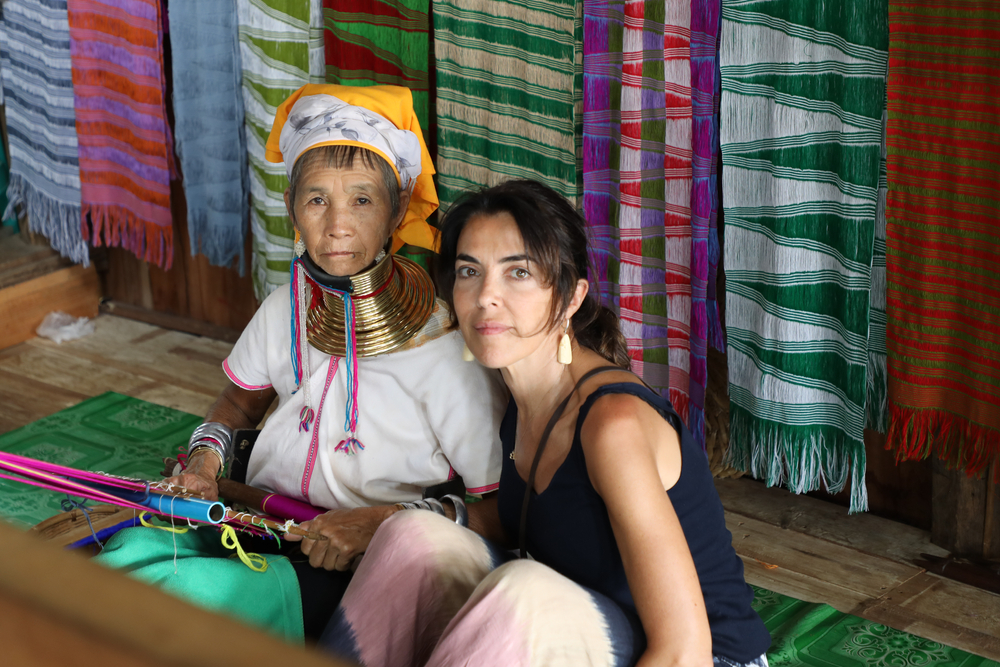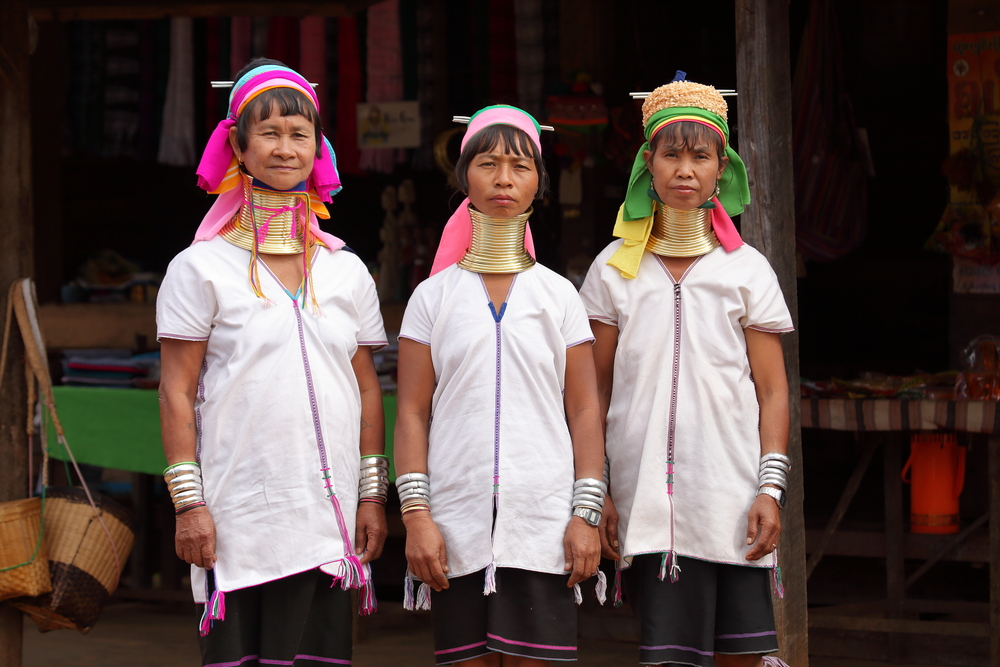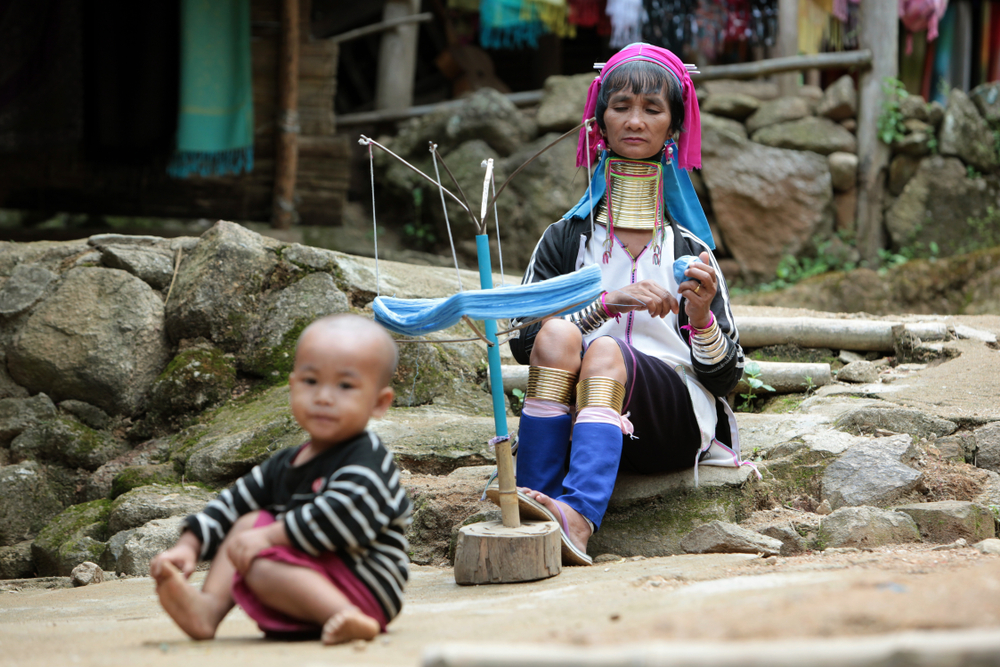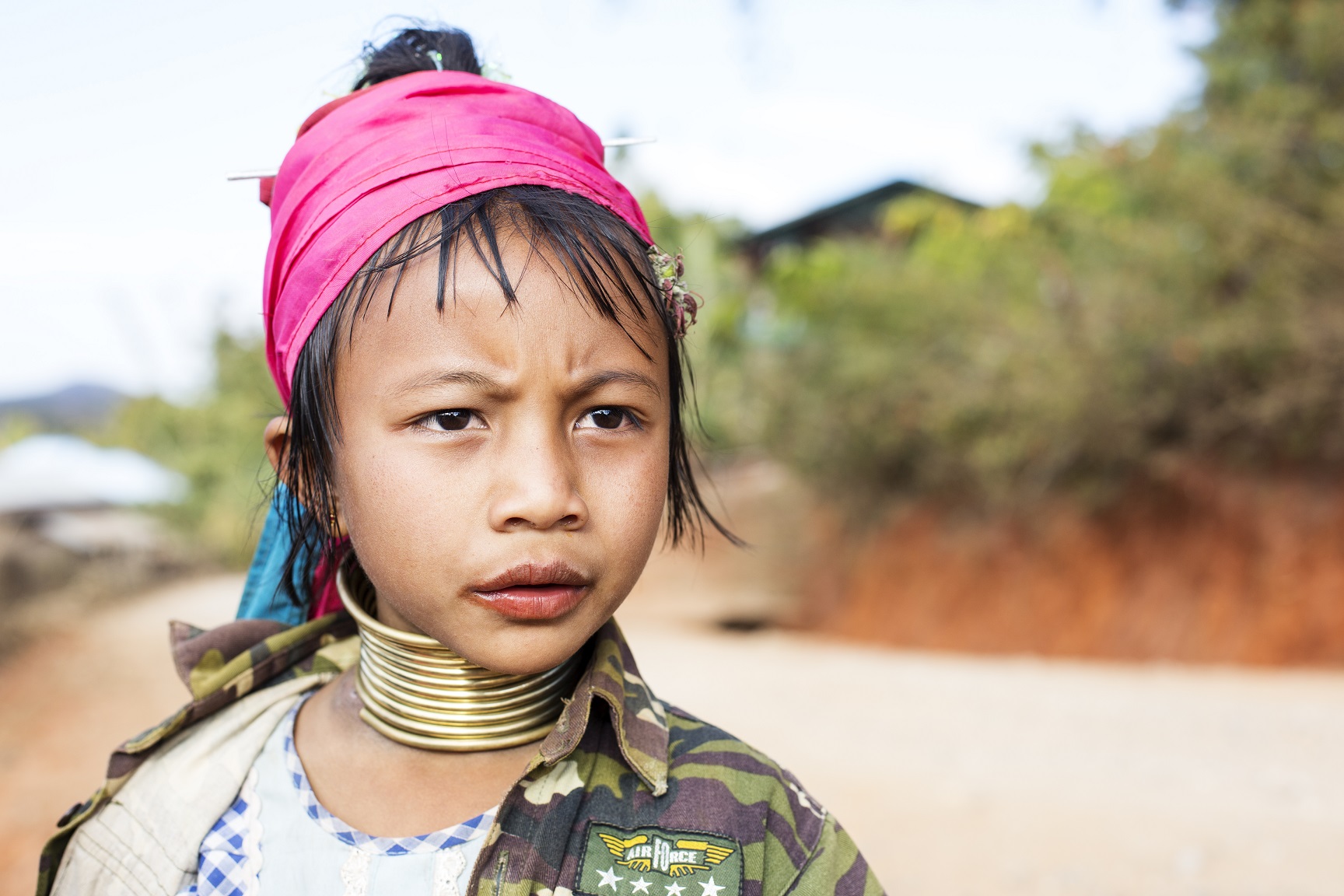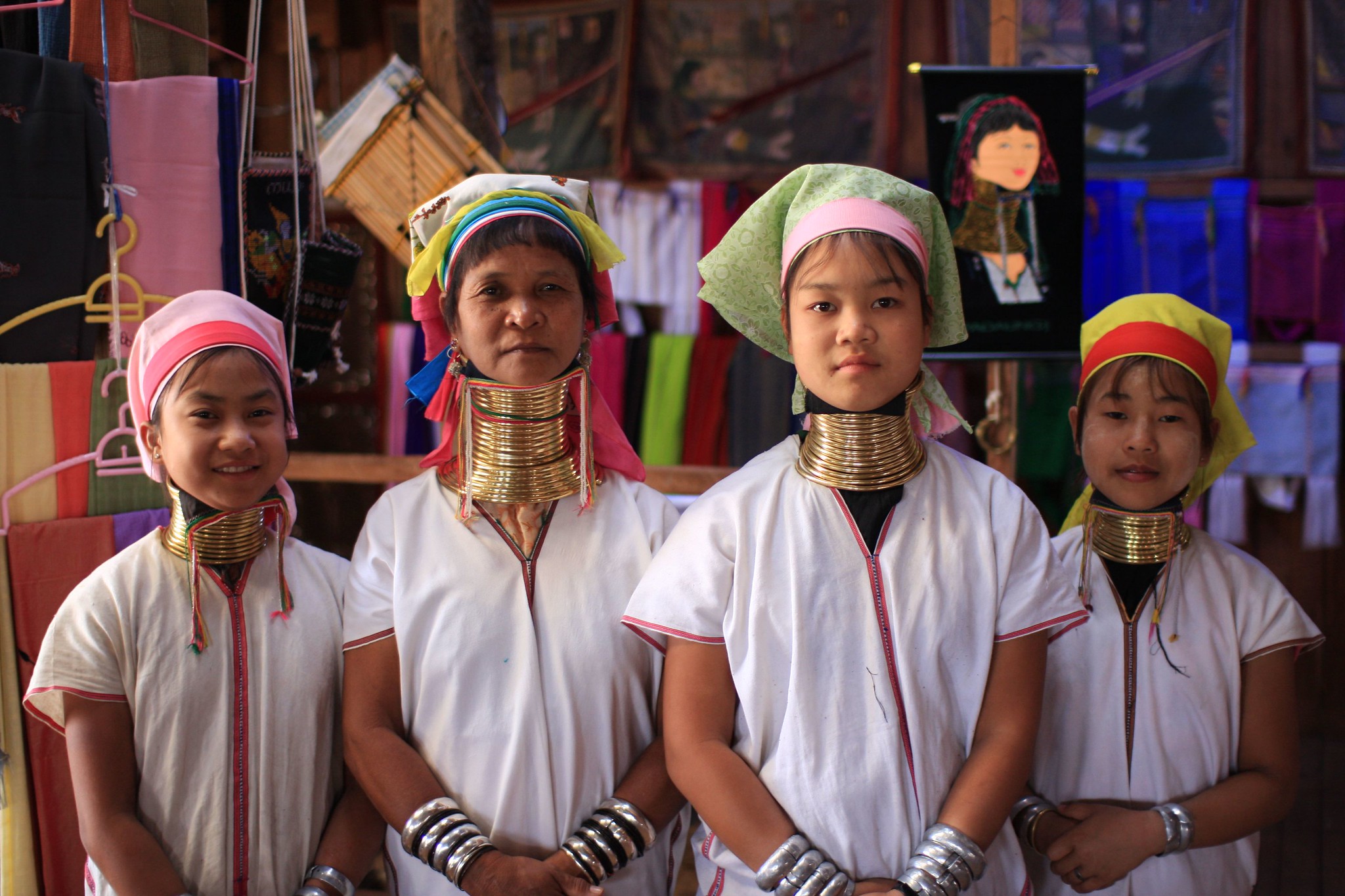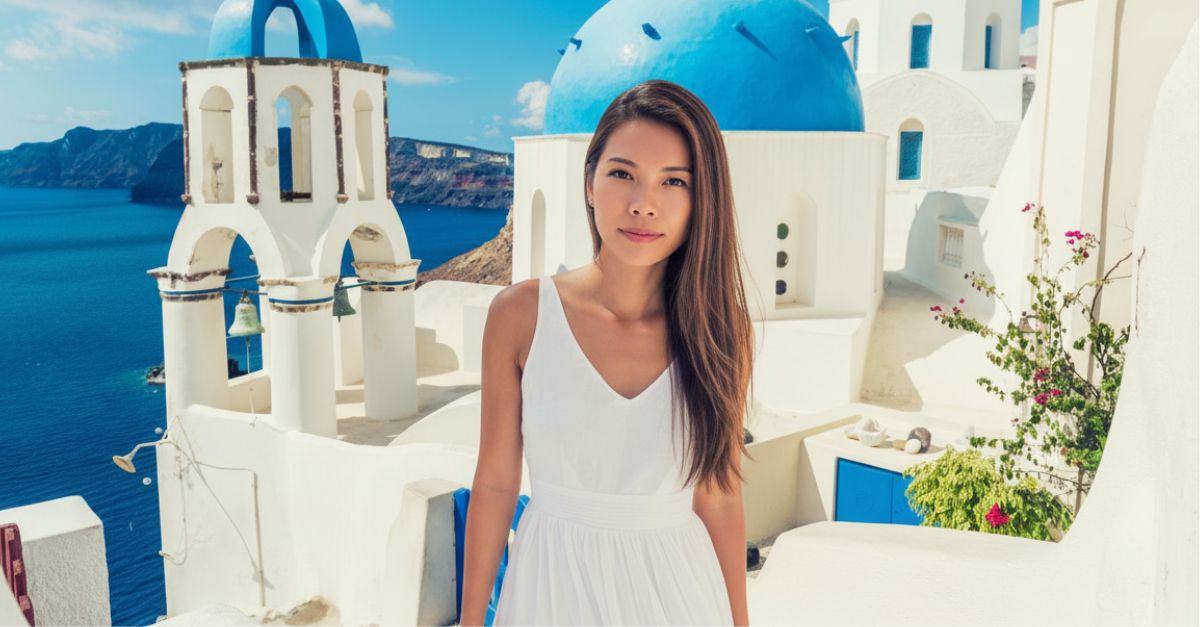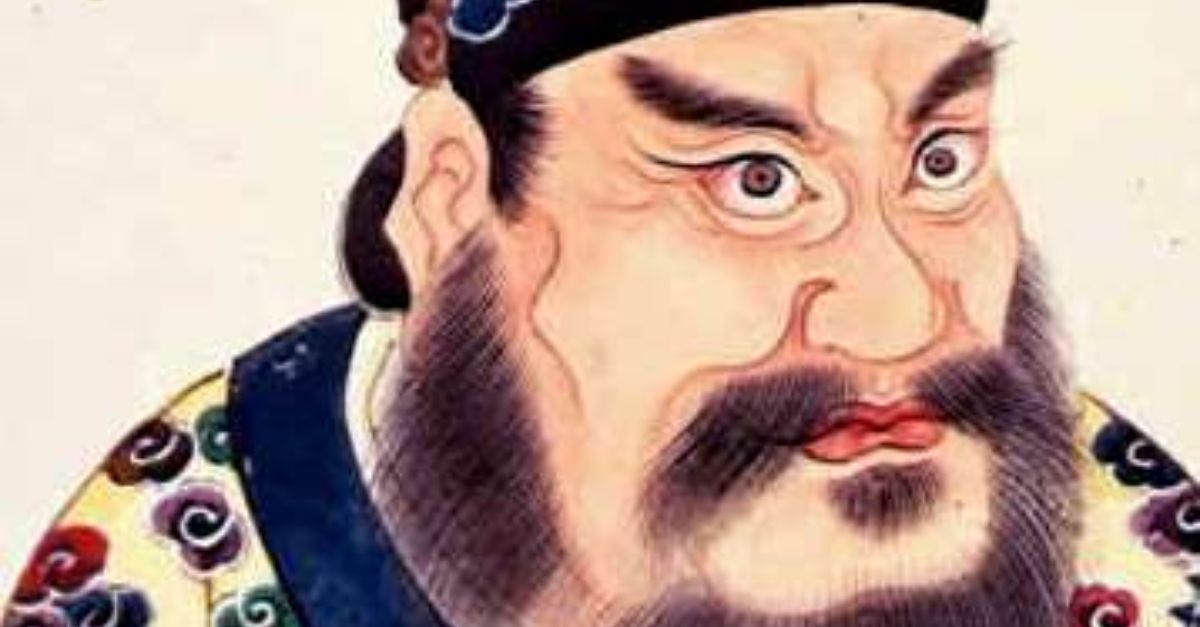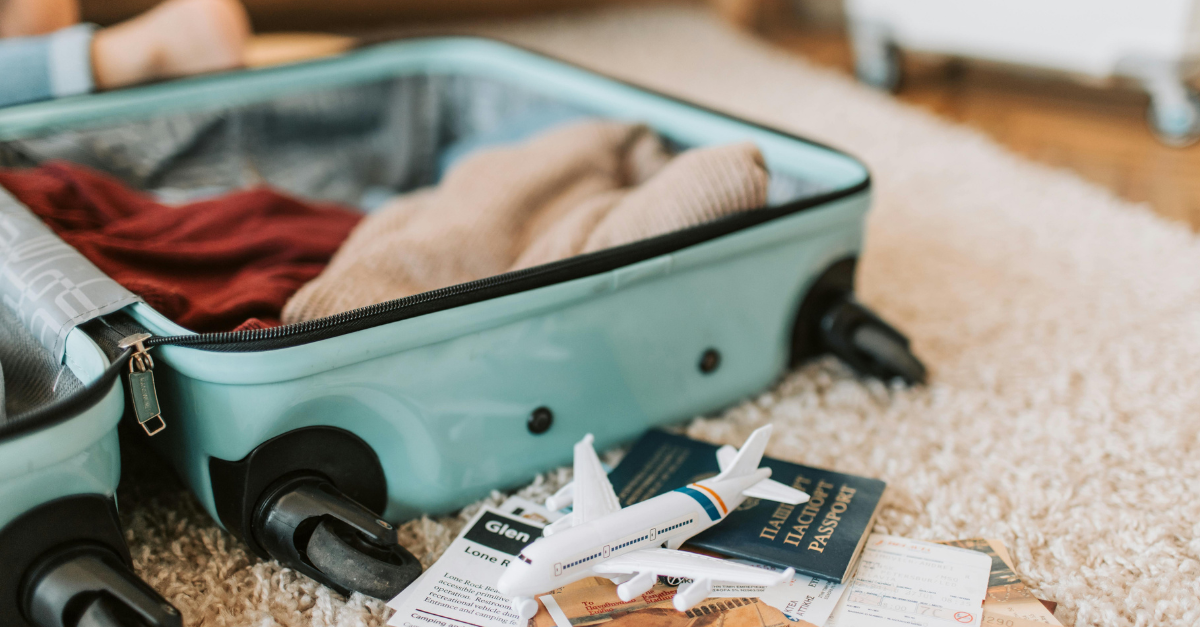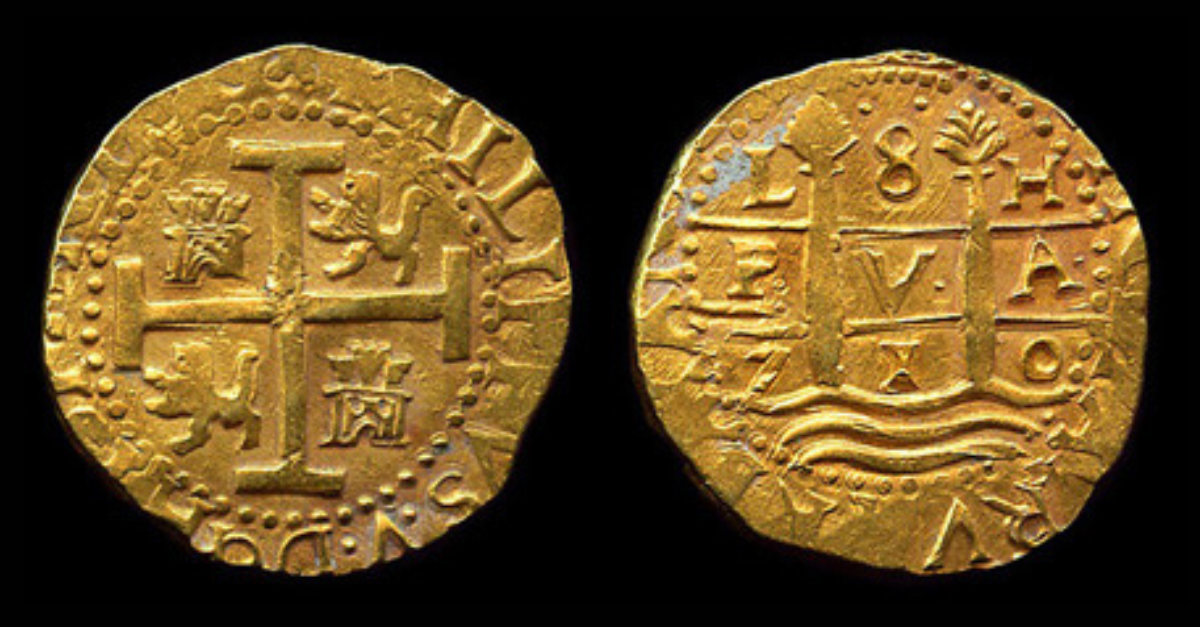The Truth About The Kayan
Of all the Indigenous communities in Southeast Asia, the Kayan are among the most famous, having captured the fascination of tourists all over the world with their distinctive neck coils.
But as beautiful as the coils are, they've also been a source of controversy and concern for the wellbeing of the women who don them. So what's the truth behind the practice? And what are the lives of the Kayan really like? Let's find out.
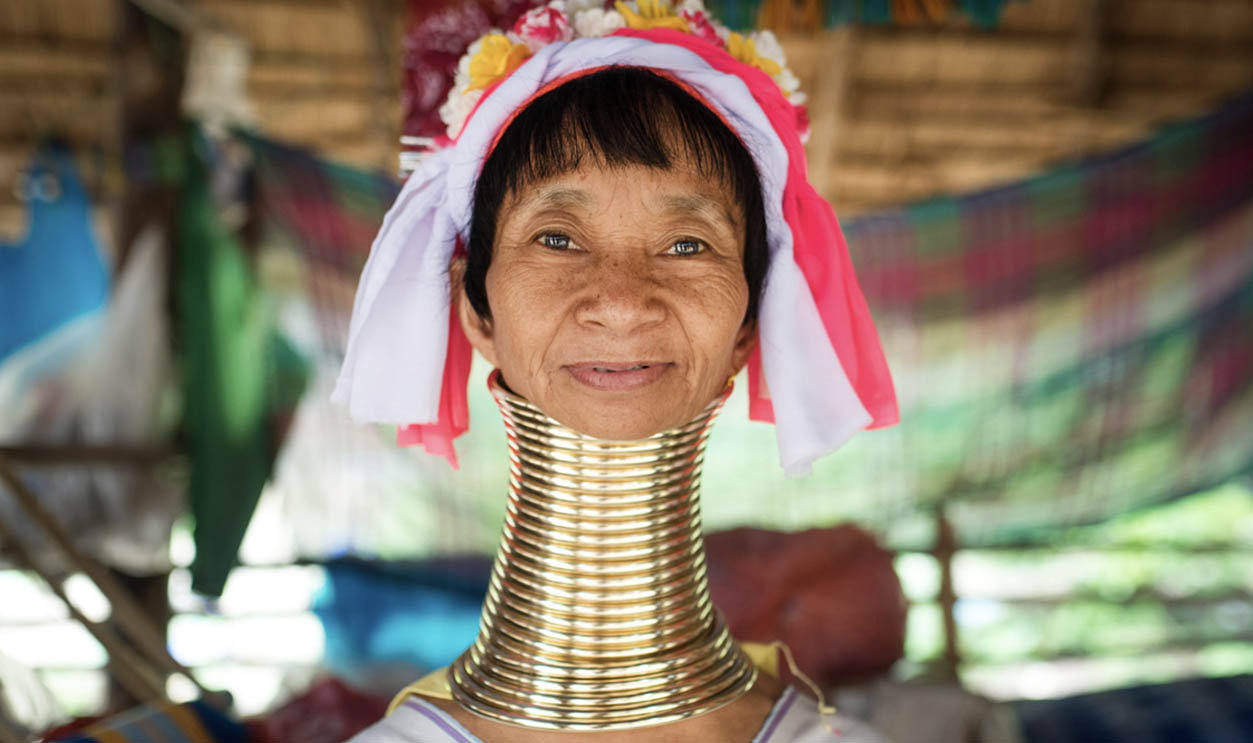
How Many Kayan Are There?
The Kayan people are originally from Myanmar. Many Kayan fled to the safety of Thailand after coming into conflict with the Myanmar military regime in the late 1980s and early 1990s.
Today, there are approximately 200,000 Kayan people living in Myanmar and Thailand.
The Kayan Tribes
There are seven different groups of Kayan, but the Kayan Lahwi are the most famous. Also known as the Padaung, the Kayan Lahwi are known for their brass neck coils, a tradition not practiced by other groups of Kayan.
The other six groups are: the Kayan Ka Khaung, Kayan Kakhi, Kayan Ka Ngan, Kayan Lahta, Kayan Gebar, and the Bwe people.
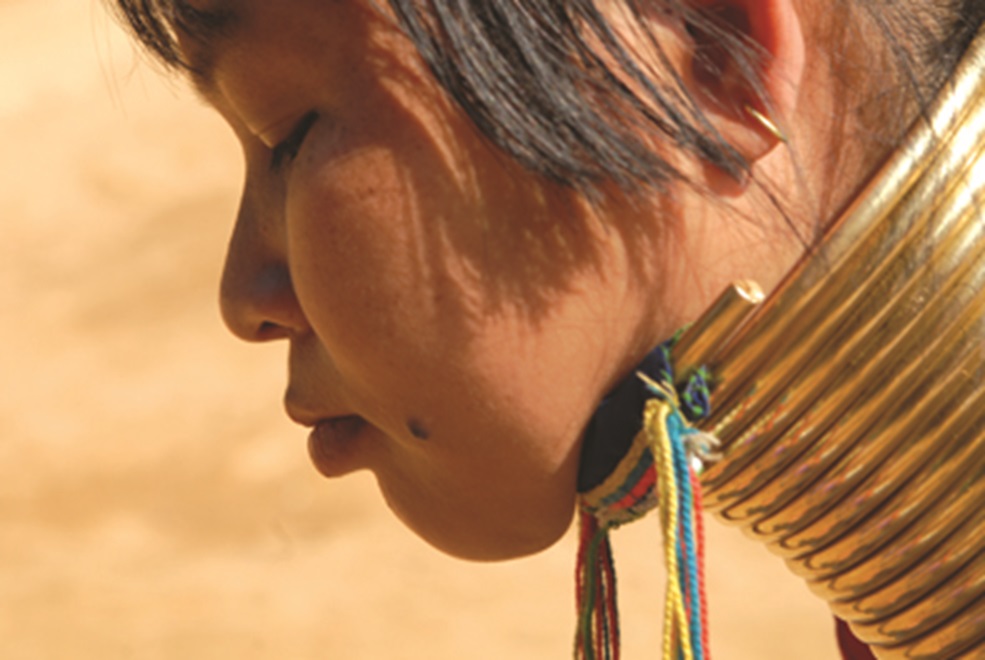 Abaris55, CC BY-SA 4.0, Wikimedia Commons
Abaris55, CC BY-SA 4.0, Wikimedia Commons
Where Do They Live Now?
In Thailand, many Kayan live in Karenni State. There are three villages in Mae Hong Son province, in addition to five other smaller villages—these villages are the ones that tourists are drawn to, as this is where the Kayan Lahwi live.
Huay Pu Keng is the largest of the three villages, near Thai border with Myanmar. But not all Kayan live so well.
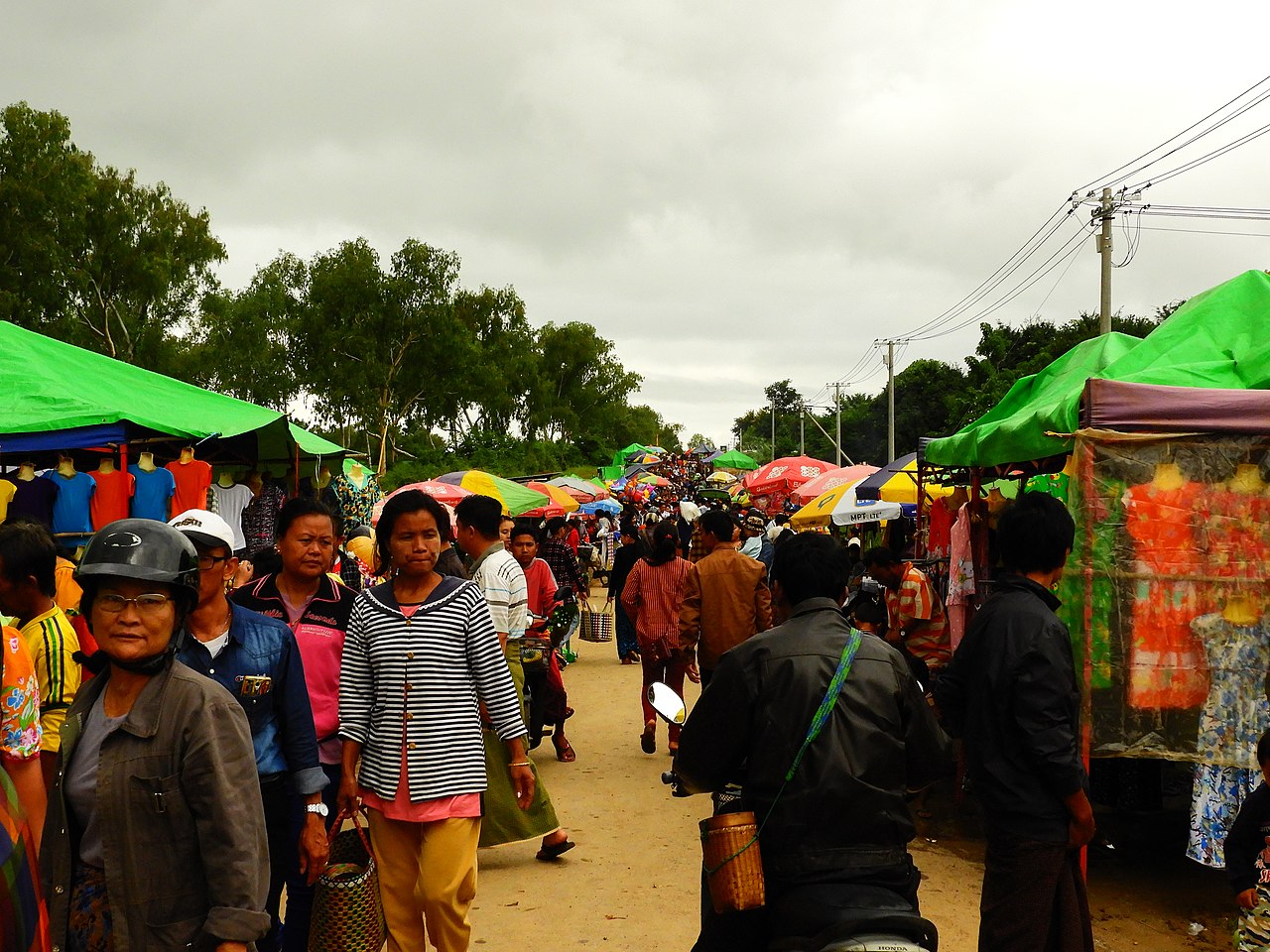 MarenHumburg, CC BY-SA 4.0, Wikimedia Commons
MarenHumburg, CC BY-SA 4.0, Wikimedia Commons
Where Do They Live Now?
The Kayan arrived in Thailand as refugees, fleeing the civil war in Myanmar. As such, while some Kayan have assimilated and made a new home in Thailand, most live in refugee camps along the border between the two countries. The Kayan living in refugee camps live in a horrible state of abject poverty.
The Ethnic Cards
Life may be better for the Kayan in Thailand, but it’s not without its hardships. Though people have been living in the Kayan villages, like Huay Pu Keng, for many years, they do not have Thai citizenship. Instead, they are given “ethnic cards”, which can be renewed every 10 years.
These ethnic cards are sometimes used to control where the Kayan can and can’t go.
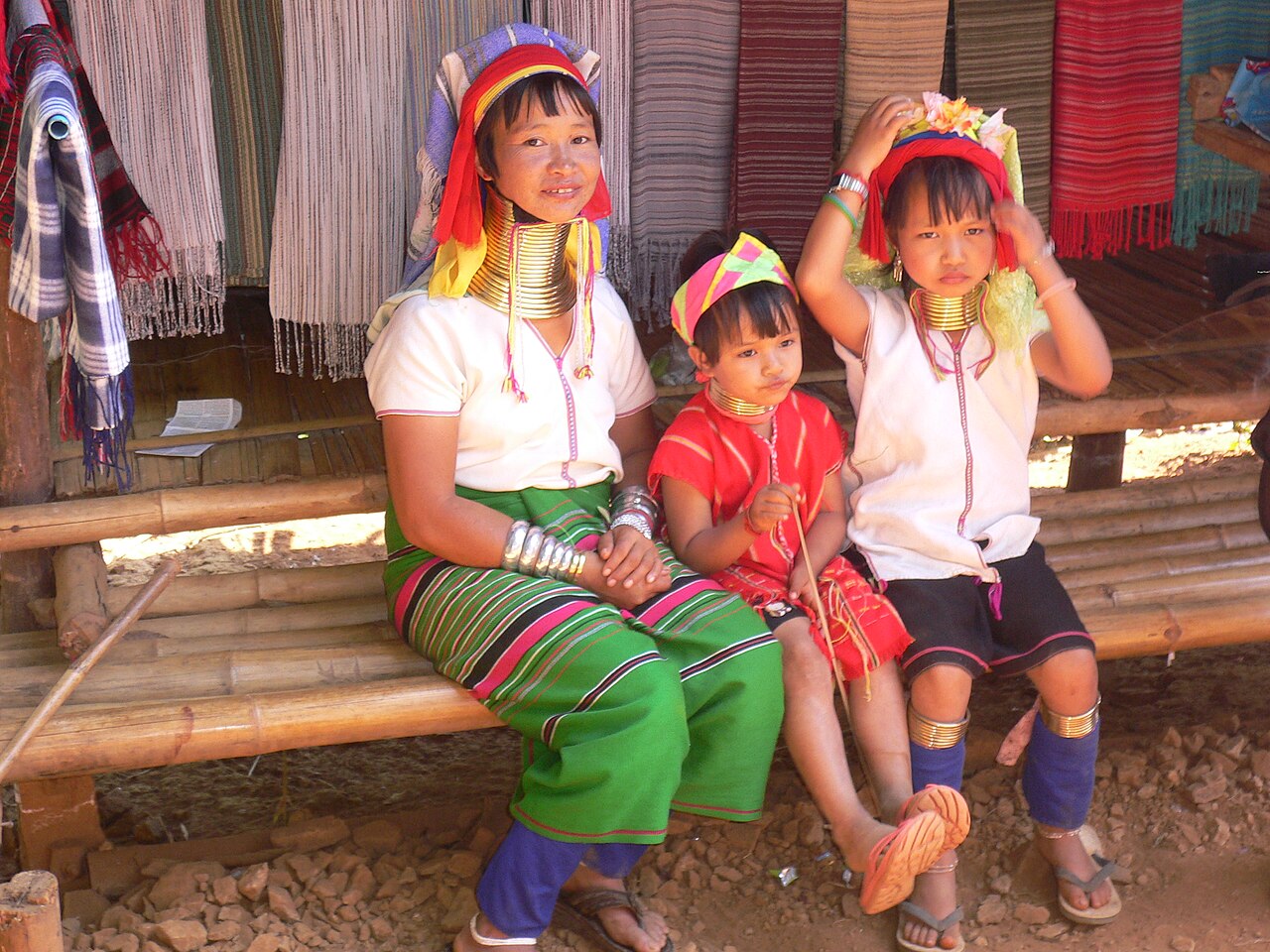
The Ethnic Cards
Only those with ethnic cards are allowed into the Kayan villages. If they do not have an ethnic card, then they must get a migrant worker’s card. Kayan children born to parents with ethnic cad are considered to be Thai citizens and can be educated in Thai schools.
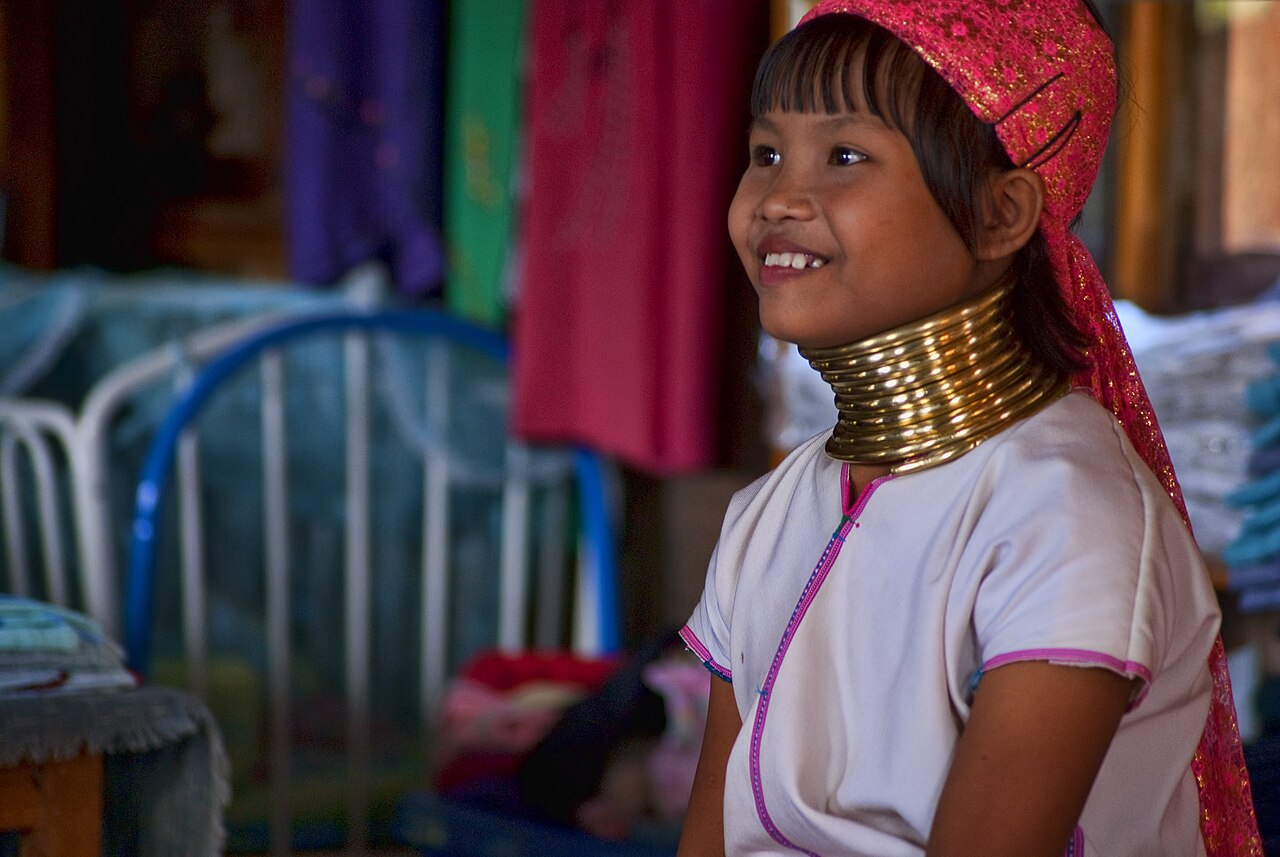 Philip Nalangan, CC BY-SA 4.0, Wikimedia Commons
Philip Nalangan, CC BY-SA 4.0, Wikimedia Commons
The Ethnic Cards
Kayan women without a card can enter the villages another way: by wearing their traditional clothing. People not wearing their traditional clothes are likely to be stopped and questioned by law enforcement officers and can even risk being arrested.
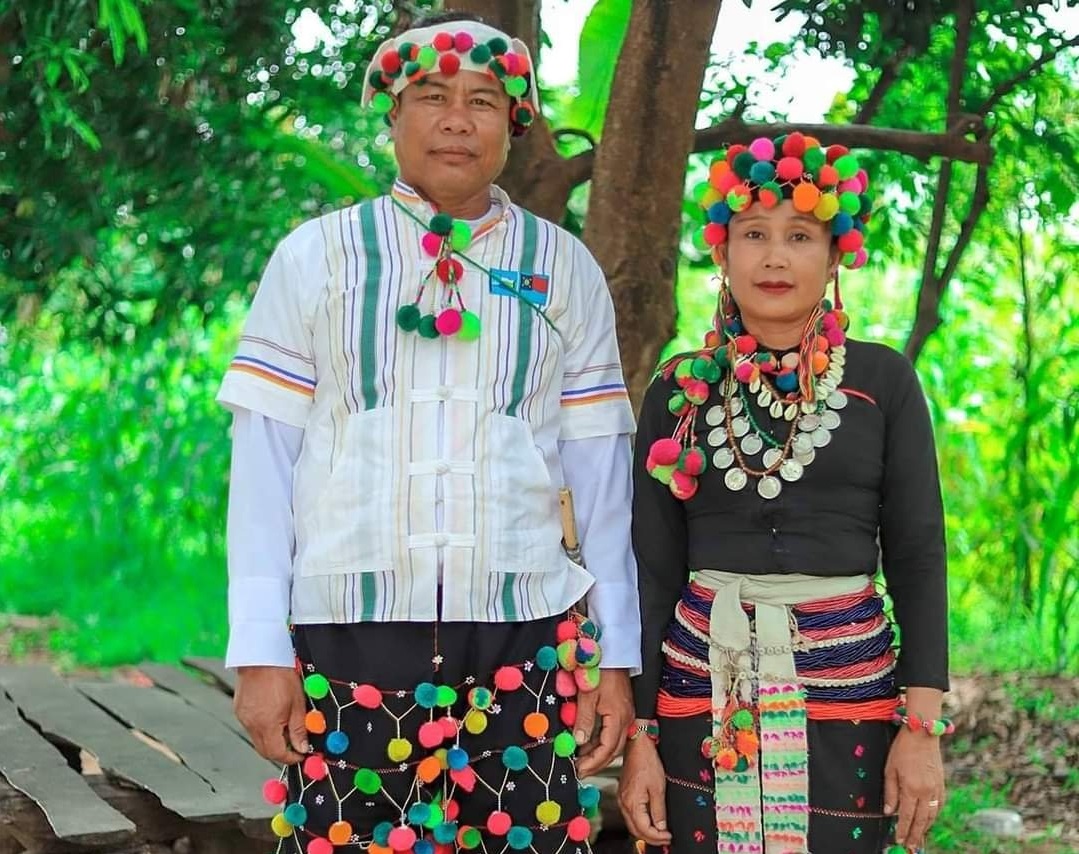 Usharyi, CC BY 4.0, Wikimedia Commons
Usharyi, CC BY 4.0, Wikimedia Commons
Their Neck Coils
One of the most unique aspects of Kayan culture is the tradition of neck elongation. Starting at age five, women of the Kayan Lahwi tribe adorn themselves with brass coils, which creates the illusion of elongated necks.
The coils don't actually stretch the women's necks. Instead, the weight of the coils pushes the collarbone down.
Their Neck Coils
Kayan neck coils can weigh up to 11 pounds and push the collarbones as far as 15 inches down. The women start wearing the coils from a young age so that their body can get used to the weight—starting during puberty would be far too painful. More are added as a woman gets older, with some women having up to 20 coils.
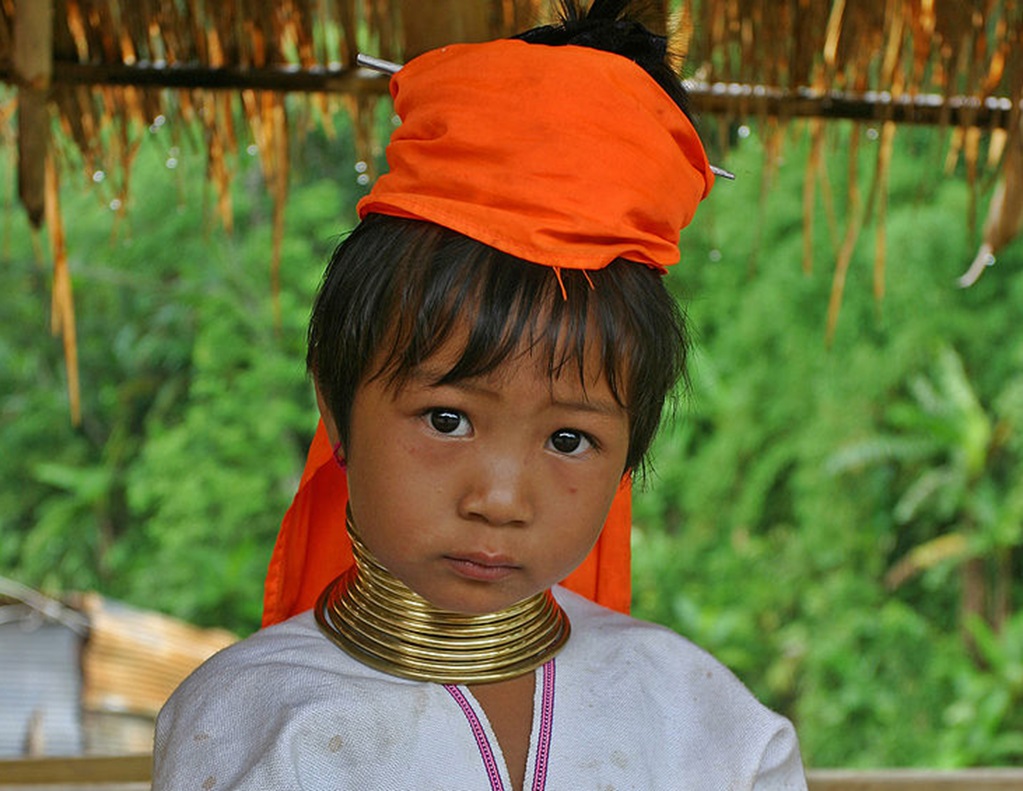 Diliff, CC BY-SA 3.0, Wikimedia Commons
Diliff, CC BY-SA 3.0, Wikimedia Commons
Their Neck Coils
The coils prevent Kayan women from leaning their necks back naturally, so they must drink out of straws. The women clean their coils with steel wool and a mixture of lime, tamarind bark, and straw.
Why Do They Wear Neck Coils?
Some anthropologists think that Kayan women started wearing neck coils as a way to make them unattractive to other tribes and reduce their chances of being taken as slaves. Some have also suggested that the coils are supposed to make the women look more slender and attractive to men.
There may be darker reasons, however—which we'll get to later.
Do They Take Their Neck Coils Off?
For the most part, Kayan women always wear their neck coils. They only time the coils might come off is during a medical examination.
It takes a long time to put a coil on and long-term use often causes the women's necks to become bruised or discolored. Most also come to feel like the coil is part of their body, so they keep them on.
Kayan Tattoos
Tattooing is a popular practice among Kayan women. Their tattoos are known as "g'num," and they wear these intricate designs on their hands and forearms. The g'num symbolize beauty and strength.
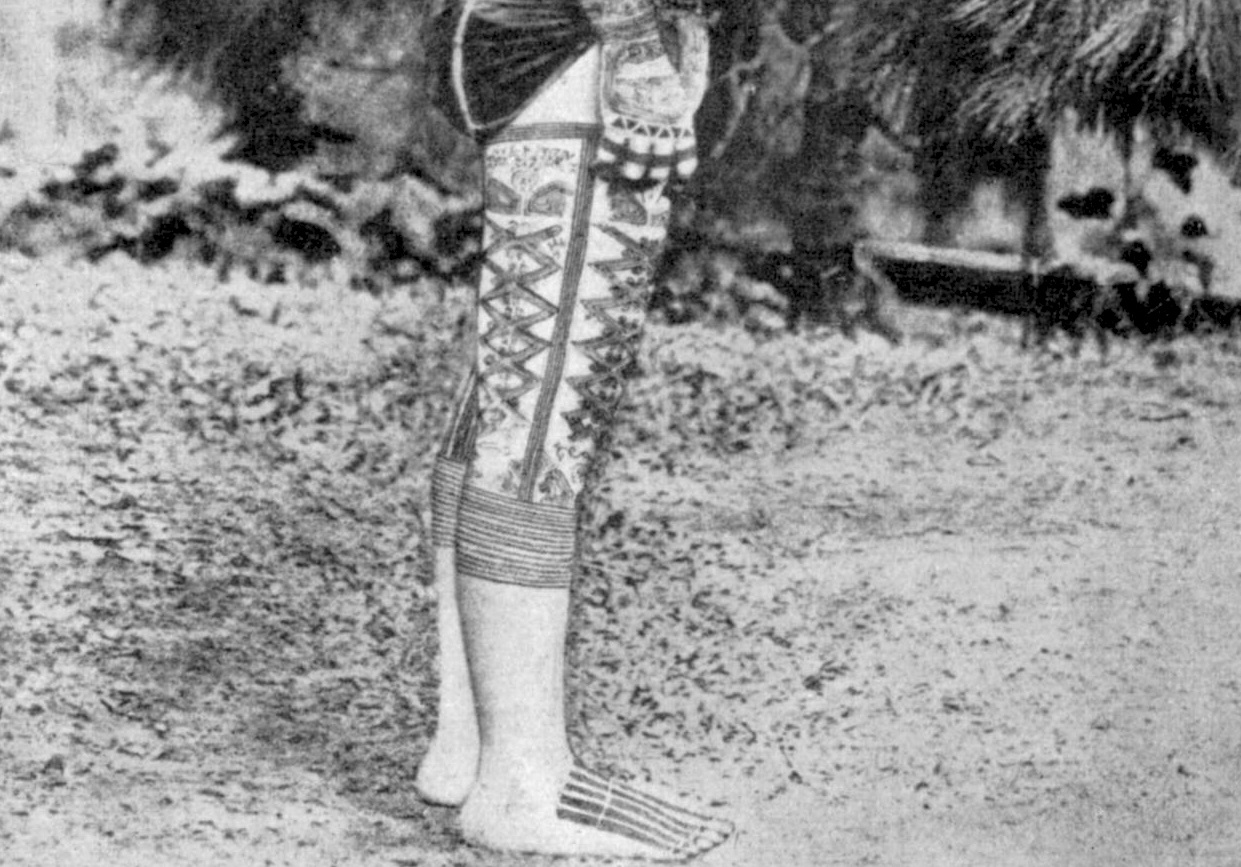 W. H. Furness 3rd, Wikimedia Commons
W. H. Furness 3rd, Wikimedia Commons
What Do Their Clothes Look Like?
The Kayan people take pride in their vibrant traditional clothing. Women wear colorful woven fabrics, and men often don distinctive colors, too, which reflect their cultural heritage.
What Are Their Spiritual Beliefs?
The Kayan people maintain a deep connection with their departed loved ones through the practice of ancestor worship. They use rituals and ceremonies to honor the departed and believe their ancestors guide them through life.
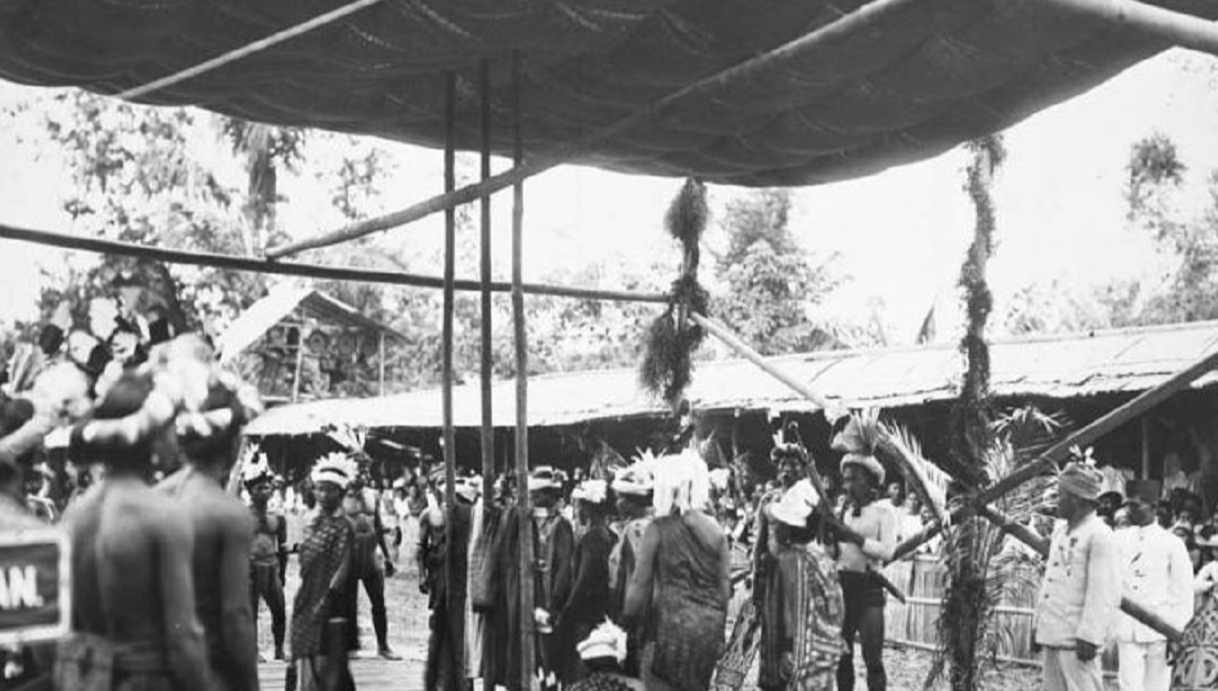 Tropenmuseum, CC BY-SA 3.0, Wikimedia Commons
Tropenmuseum, CC BY-SA 3.0, Wikimedia Commons
Their Origin Story
The Kayan also practice a traditional religion called Kan Khwan. According to this theology, the Kayan people were created by a union between a female dragon and man who was half human, half angel.
 Sir George Scott, Wikimedia Commons
Sir George Scott, Wikimedia Commons
What Do They Believe In Now?
Italian missionaries first encountered the Kayan in the 19th century. Today, many Kayan follow Roman Catholicism.
Buddhism and Baptist Protestantism are also common among the Kayan, but a large portion of the population still follows traditional Kan Khwan beliefs.
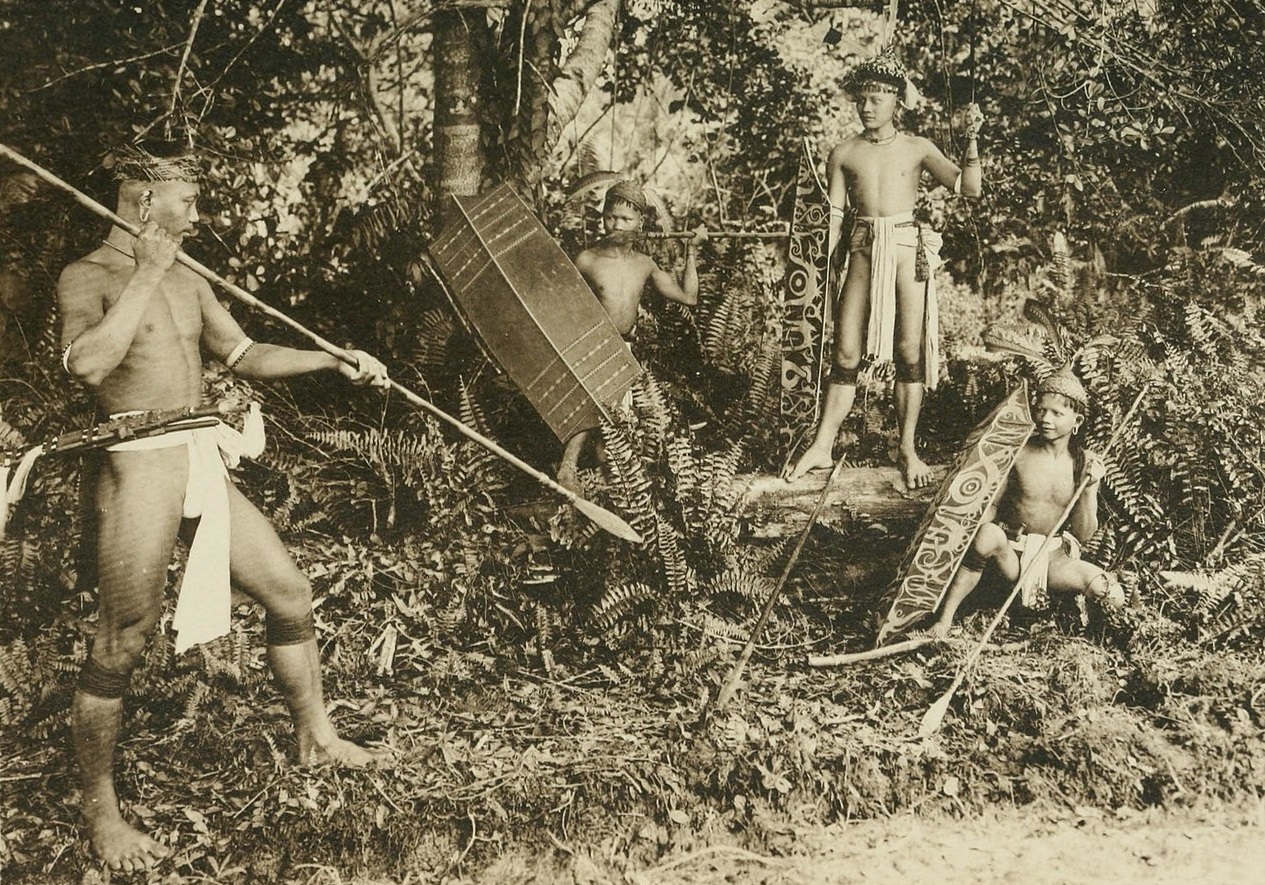 Internet Archive Book Images, Wikimedia Commons
Internet Archive Book Images, Wikimedia Commons
Passing Down Stories
The Kayan do not have a written language. They use oral traditions like storytelling and songs to pass on their history.
Elders play an important role in passing down stories, myths, and cultural knowledge to younger generations.
Kayan Festivals
The Kayan people observe various festivals throughout the year, but the Kay Htein Bo Festival is the most important. During this three-day festival which occurs every spring, many Kayan tribes will gather to dance around large poles staked into the ground and make offerings of pigs and cows to usher in a good harvest.
 Tropenmuseum, CC BY-SA 3.0, Wikimedia Commons
Tropenmuseum, CC BY-SA 3.0, Wikimedia Commons
Kay Htein Bo
More than just being a time of celebration, Kay Htein Bo is also a deeply spiritual festival. The pole that is placed in the ground relates to Kayan mythology, in which the creator god formed the Earth by sticking a large stake into the ground.
 Sir George Scott, Wikimedia Commons
Sir George Scott, Wikimedia Commons
Kay Htein Bo
It is said that the creator god cut the stake from a eugenia tree, so the Kayan use the tree to make the poles for Kay Htein Bo. Each pole has four levels. The first level, at the top, is the star. The second level represents the sun, while the third represents the moon. The fourth and final level is a ladder that’s made from a long piece of white cloth.
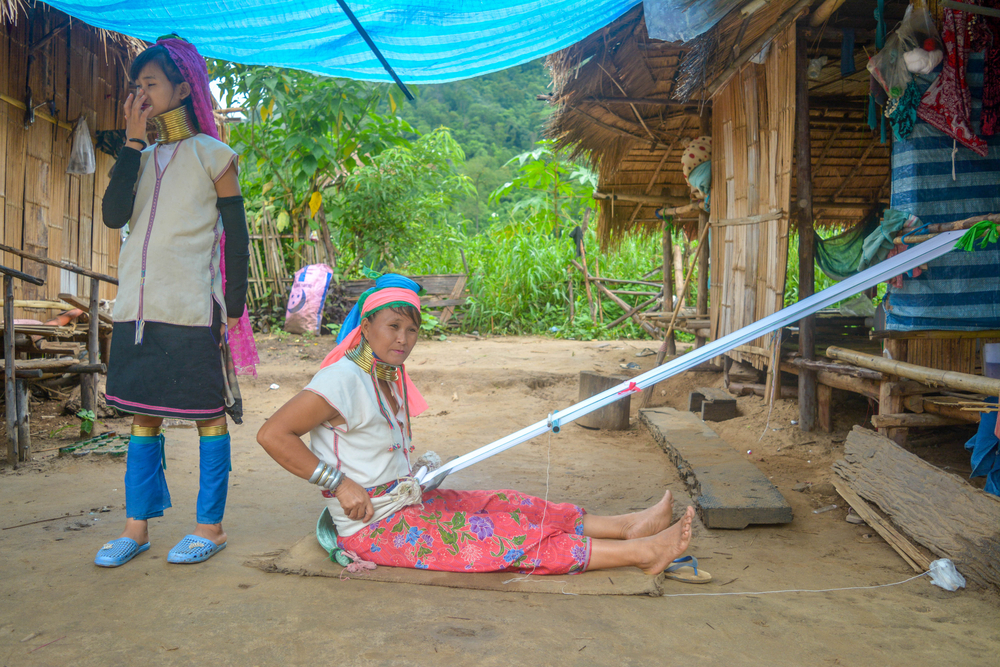 Travel__Photography, Shutterstock
Travel__Photography, Shutterstock
Kay Htein Bo
Only men dance around the Kay Htein Bo poles, dressed in black pants and white shirts. After the dances, there’s usually a sports competition.
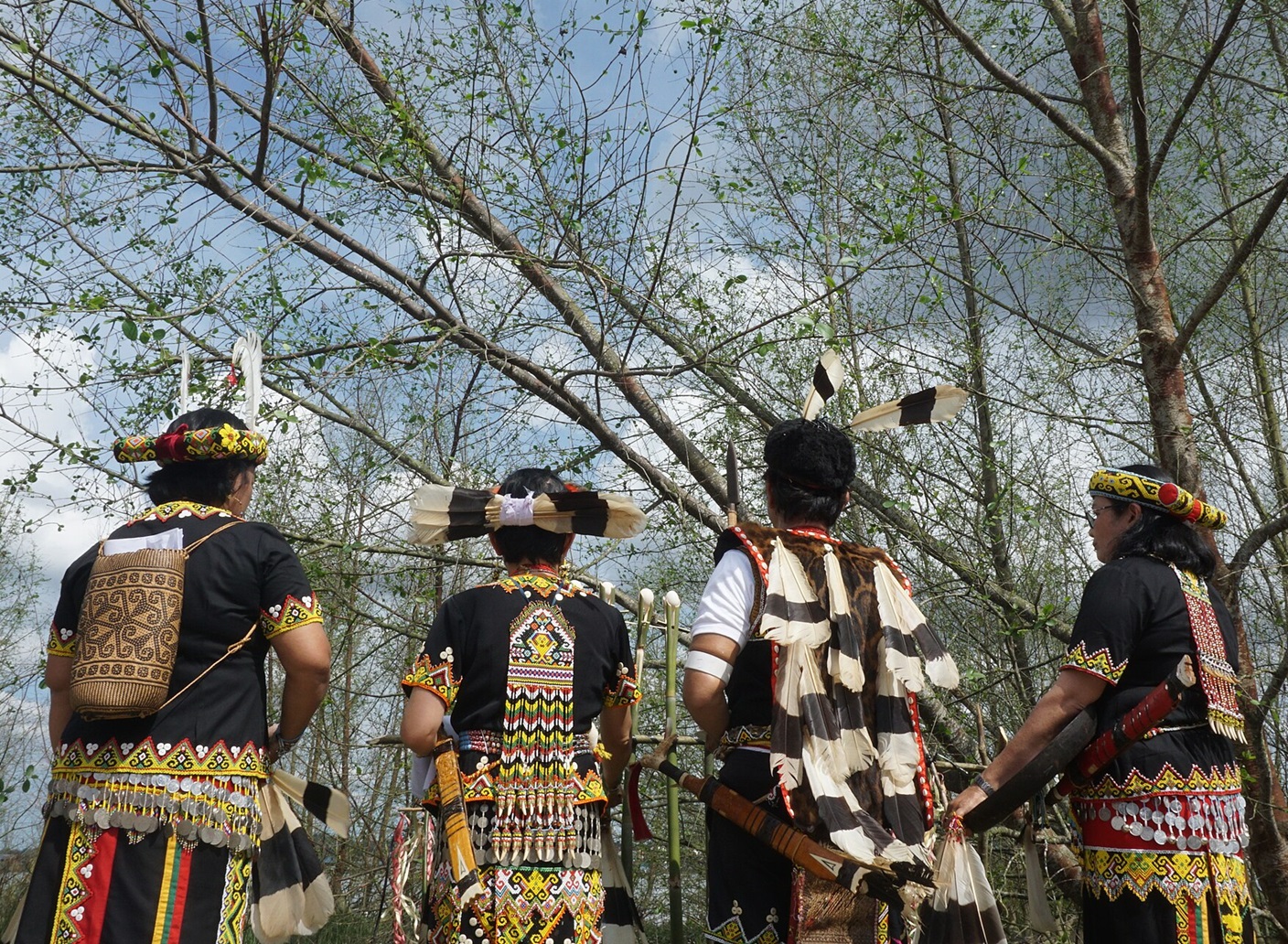 Jisdmax, CC BY-SA 4.0, Wikimedia Commons
Jisdmax, CC BY-SA 4.0, Wikimedia Commons
Kay Htein Bo
In addition to praying for a good harvest, Kay Htein Bo is also when people give thanks for any blessings they received throughout the year and make appeals for forgiveness, both from the spirits and their fellow Kayan among the living.
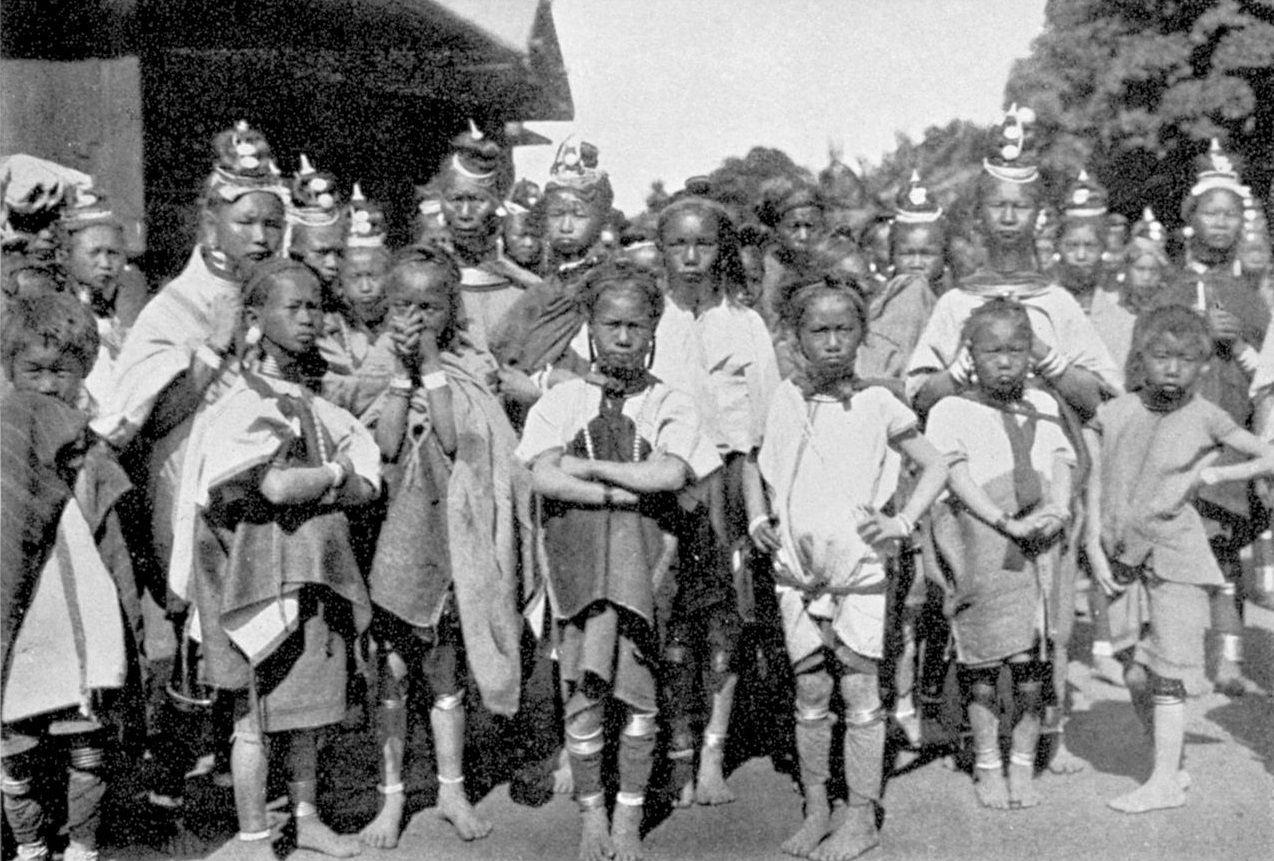 Sir George Scott, Wikimedia Commons
Sir George Scott, Wikimedia Commons
Kayan Divination
Divination is an important aspect of Kayan culture, and there’s no better time to tell peoples’ fortune than during Kay Htein Bo. The augers usually read chicken bones to decipher events in the year ahead, but they may also look for signs by breaking thatch grass.
Kayan Divination
Reading chicken bones is also an important part of Kayan cleansing ceremonies. Families may hold a cleansing ceremony during Kay Htein Bo if they’ve experienced a lot of misfortune. Here, dream interpretation may also be used by Kayan augers.
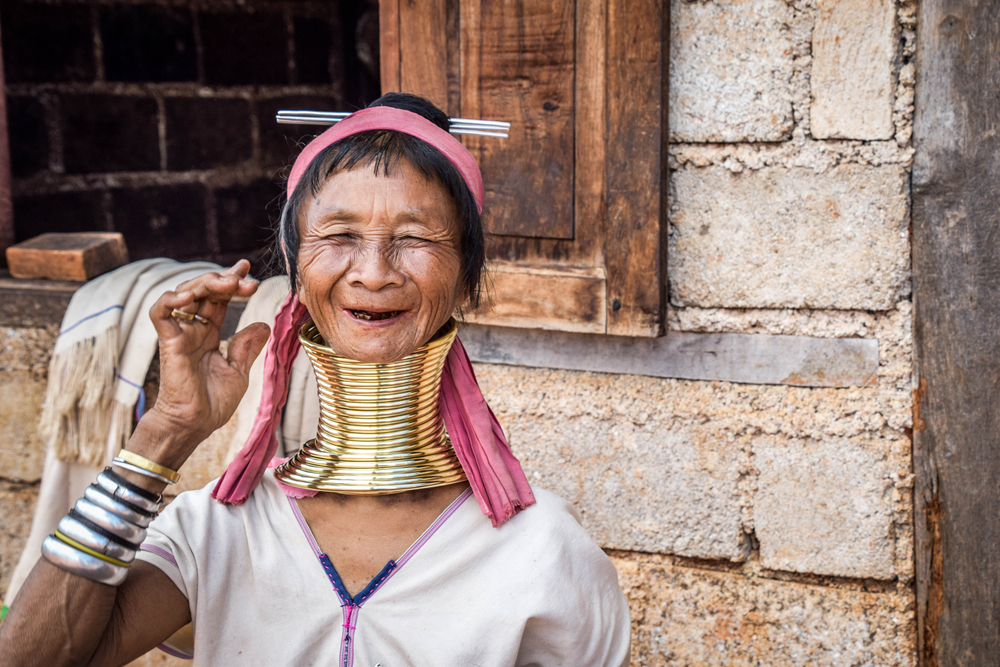 Jakub Specjalski, Shutterstock
Jakub Specjalski, Shutterstock
Traditional Music And Dance
Music and dance are key to Kayan celebrations and rituals. Traditional instruments like drums and bamboo mouth organs often accompany lively dances that pass on history or marks milestone in the lives of community members.
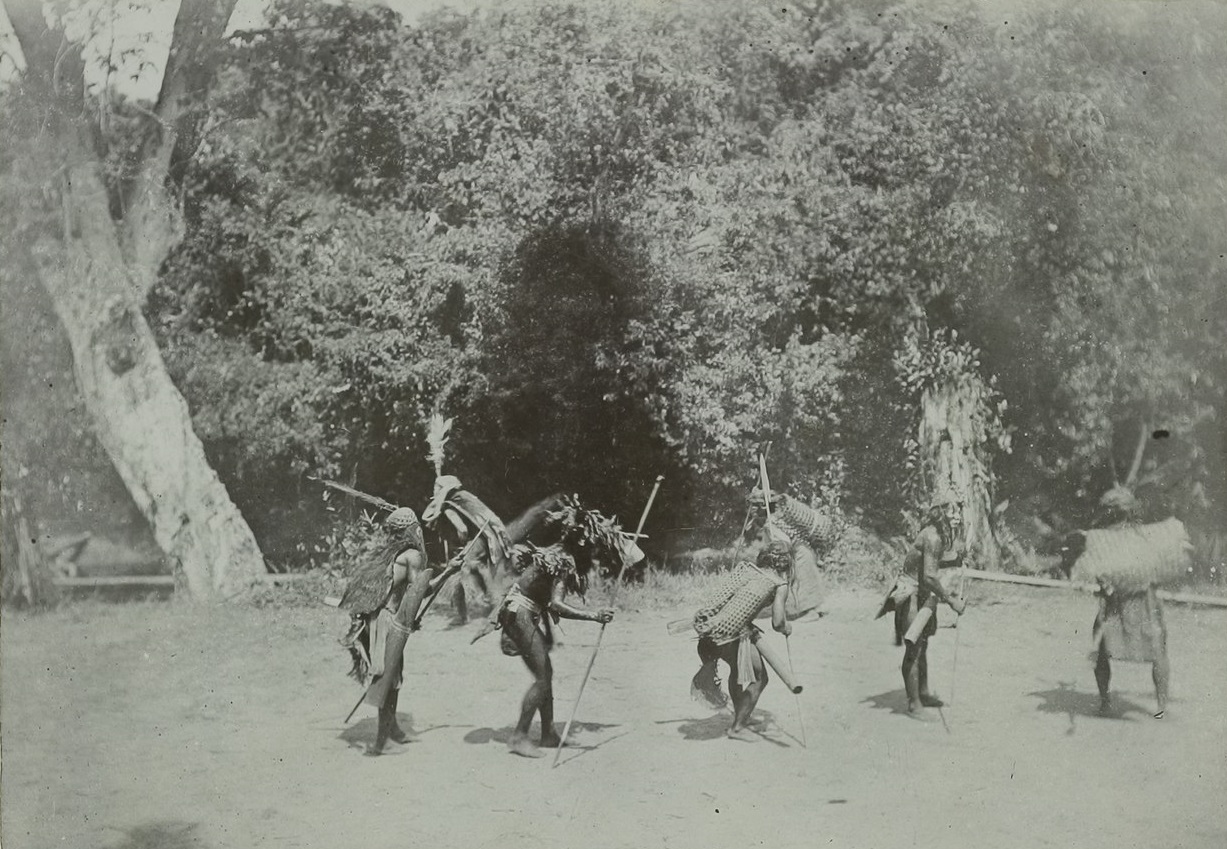 Leiden University Library, Wikimedia Commons
Leiden University Library, Wikimedia Commons
Basket Weaving In Kayan Communities
Basket weaving is a particularly important Kayan craft. The intricate, durable baskets they make have many purposes, from mundane storage containers to ceremonial uses.
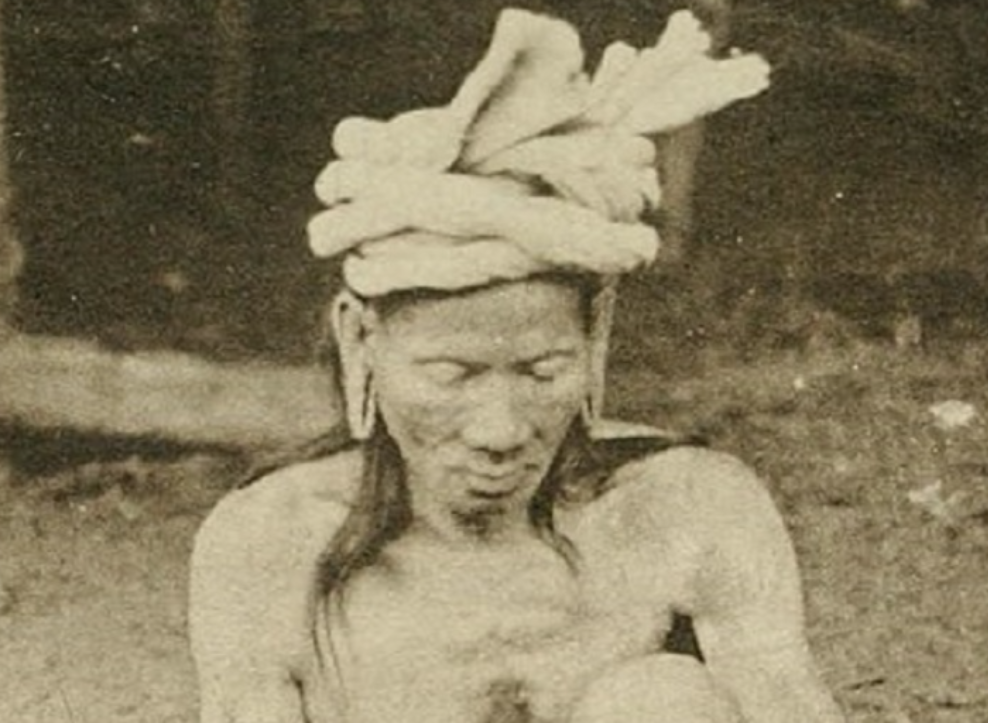 Internet Archive Book Images, Wikimedia Commons
Internet Archive Book Images, Wikimedia Commons
Kayan Art
The Kayan are renowned for their incredible weaving skills. Not only is skill this used to create their clothes, they also weave bags and other textiles that are adorned with symbolic patterns representing their community.
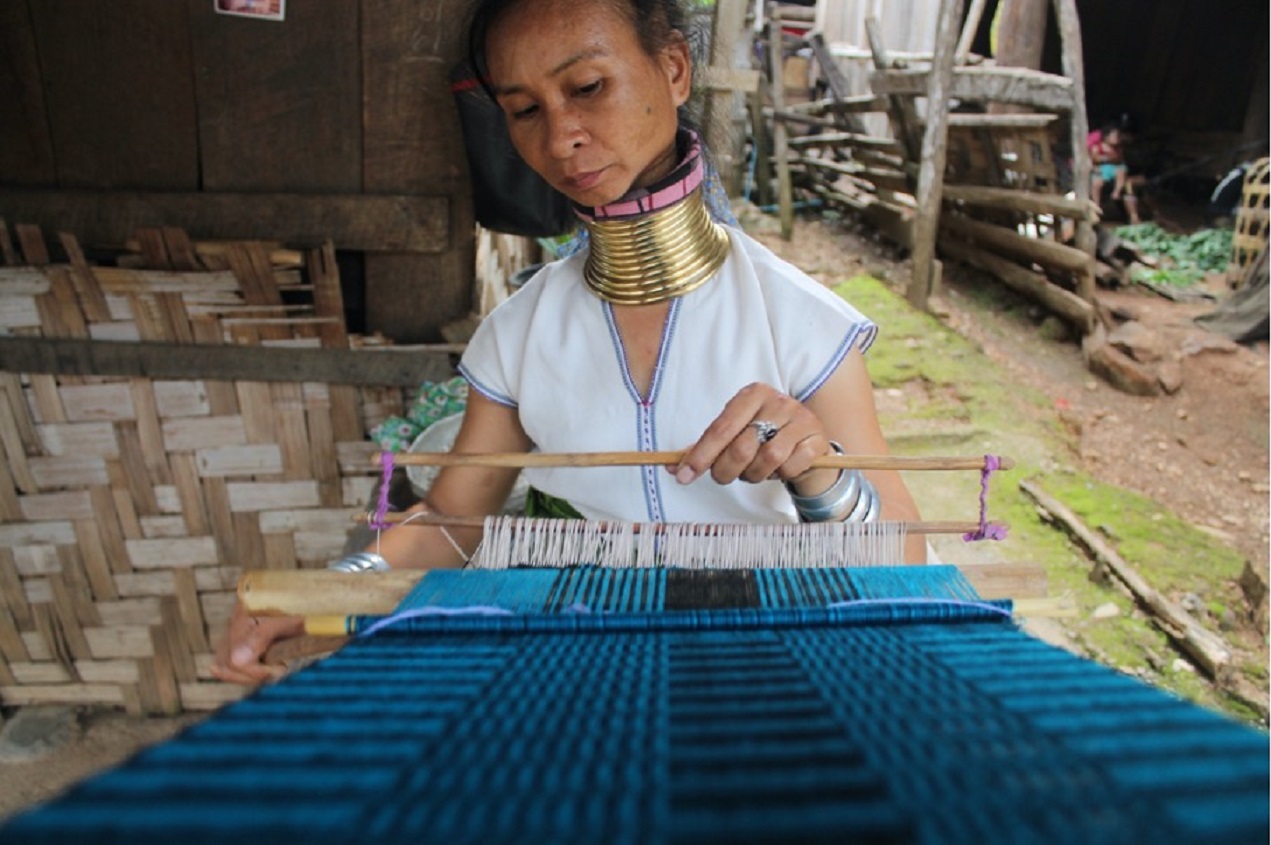 Fair Tourism, CC BY-SA 4.0, Wikimedia Commons
Fair Tourism, CC BY-SA 4.0, Wikimedia Commons
Symbolism In Kayan Art
Symbols play a significant role in Kayan art, with each motif carrying cultural significance. The unique symbolism in Kayan art pieces reflects the community values, beliefs, and identity of the artist.
Kayan Farming Practices
The Kayan people practice traditional slash-and-burn techniques to clear land for their crops. Crops such as rice, corn, and vegetables are staple foods in Kayan communities.
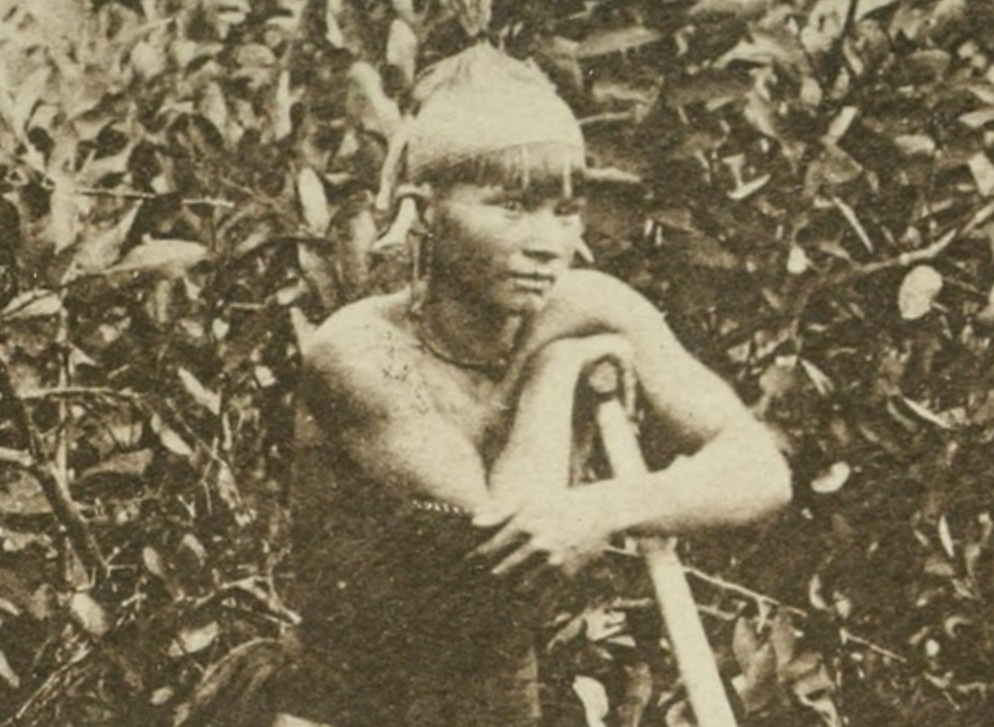 Internet Archive Book Images, Wikimedia Commons
Internet Archive Book Images, Wikimedia Commons
Their Marriage Customs
Kayan marriage ceremonies are seen as uniting not just the couple but also their families. Before the couple can get married, the potential groom must send his parents to ask the prospective bride's family for her hand in marriage.
If the woman's parents agree, the man gives her an engagement token in front of the whole village. This symbolizes his commitment to her. The man will also have to pay a dowry.
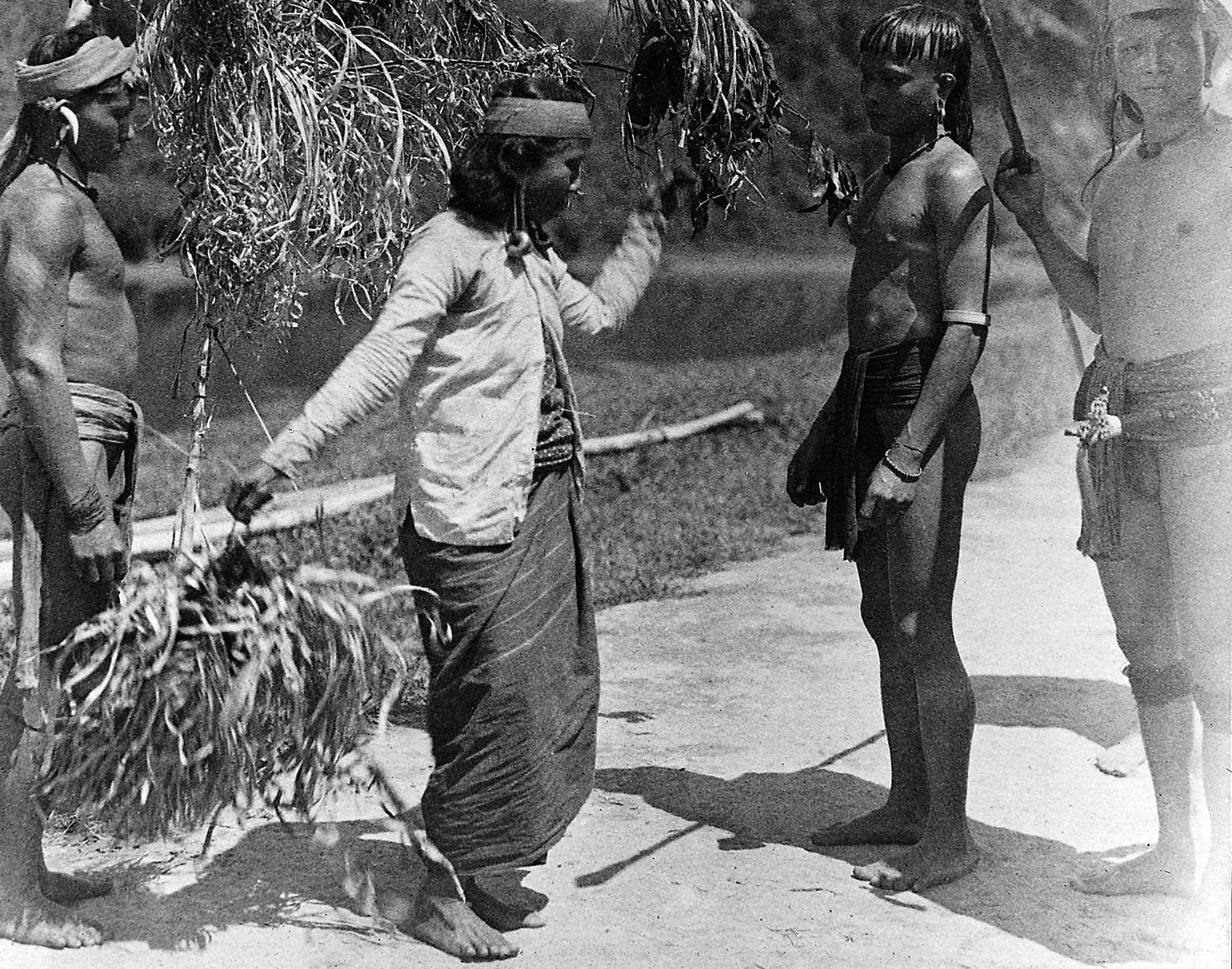 Wellcome Images, CC BY 4.0, Wikimedia Commons
Wellcome Images, CC BY 4.0, Wikimedia Commons
Kayan Dowry
The cost of the dowry can vary—if a man hasn’t proved himself to be a hard worker, he’ll have to pay a higher bride-price. Usually, though, the prospective groom would pay 20-30 coins, some gold jewelry, and three or four cows. His family would also be expected to cover all of the wedding expenses.
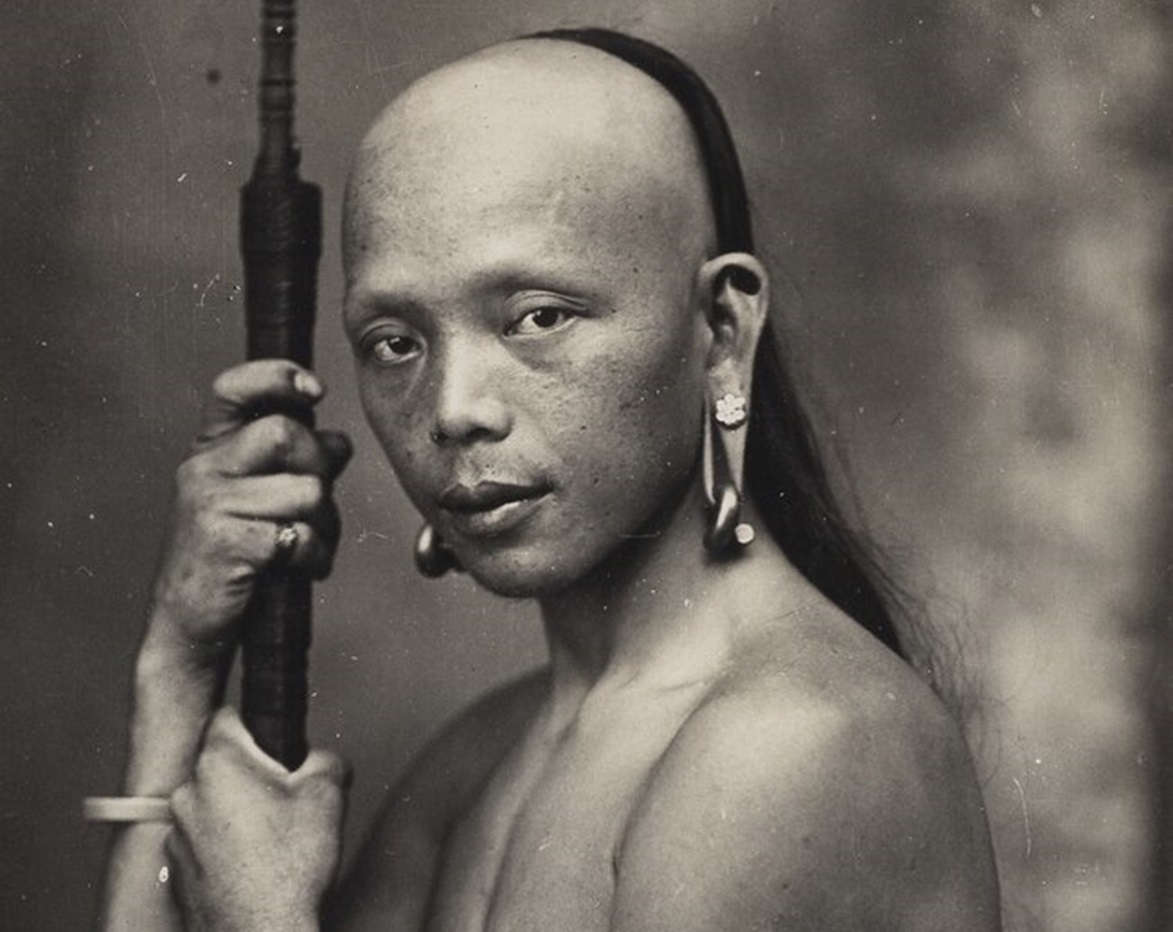 Fuse Studio (Bandjermasin), CC BY 4.0, Wikimedia Commons
Fuse Studio (Bandjermasin), CC BY 4.0, Wikimedia Commons
A Kayan Wedding Day
Kayan weddings take place in a longhouse and people from neighboring communities are usually invited.
During the ceremony, the couple will hold a ceremonial sword, as the bridesmaids circle them eight times with a sun hat. This is meant to symbolically protect the newlyweds from the sun and rain.
 PennyLane24, CC BY-SA 4.0, Wikimedia Commons
PennyLane24, CC BY-SA 4.0, Wikimedia Commons
A Kayan Wedding Day
After the ceremony, people celebrate the marriage with a night of dancing and feasting. Rice wine is a key drink at Kayan weddings, and everyone must have a taste to celebrate the bride and groom.
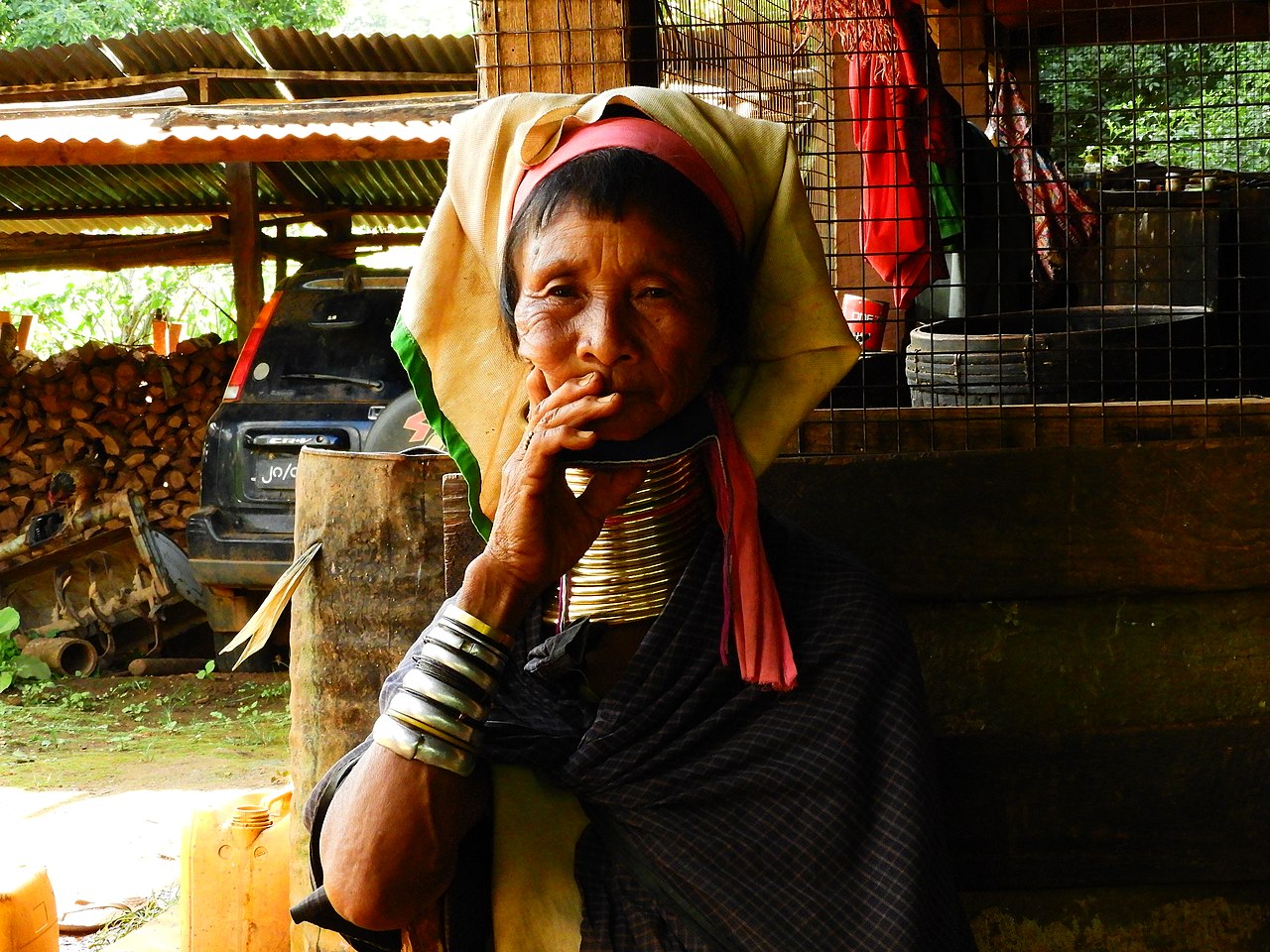 MarenHumburg, CC BY-SA 4.0, Wikimedia Commons
MarenHumburg, CC BY-SA 4.0, Wikimedia Commons
Choosing The Right Partner
When it comes to choosing a partner, the Kayan, traditionally, were different from most other societies in that they believed it was best to keep marriage within the family. That’s right—the bride and groom were supposed to be related, preferably first cousins.
They also had to be of the same generation. Marrying someone outside of one’s generation was seen as taboo, and marrying outside of the clan was forbidden.
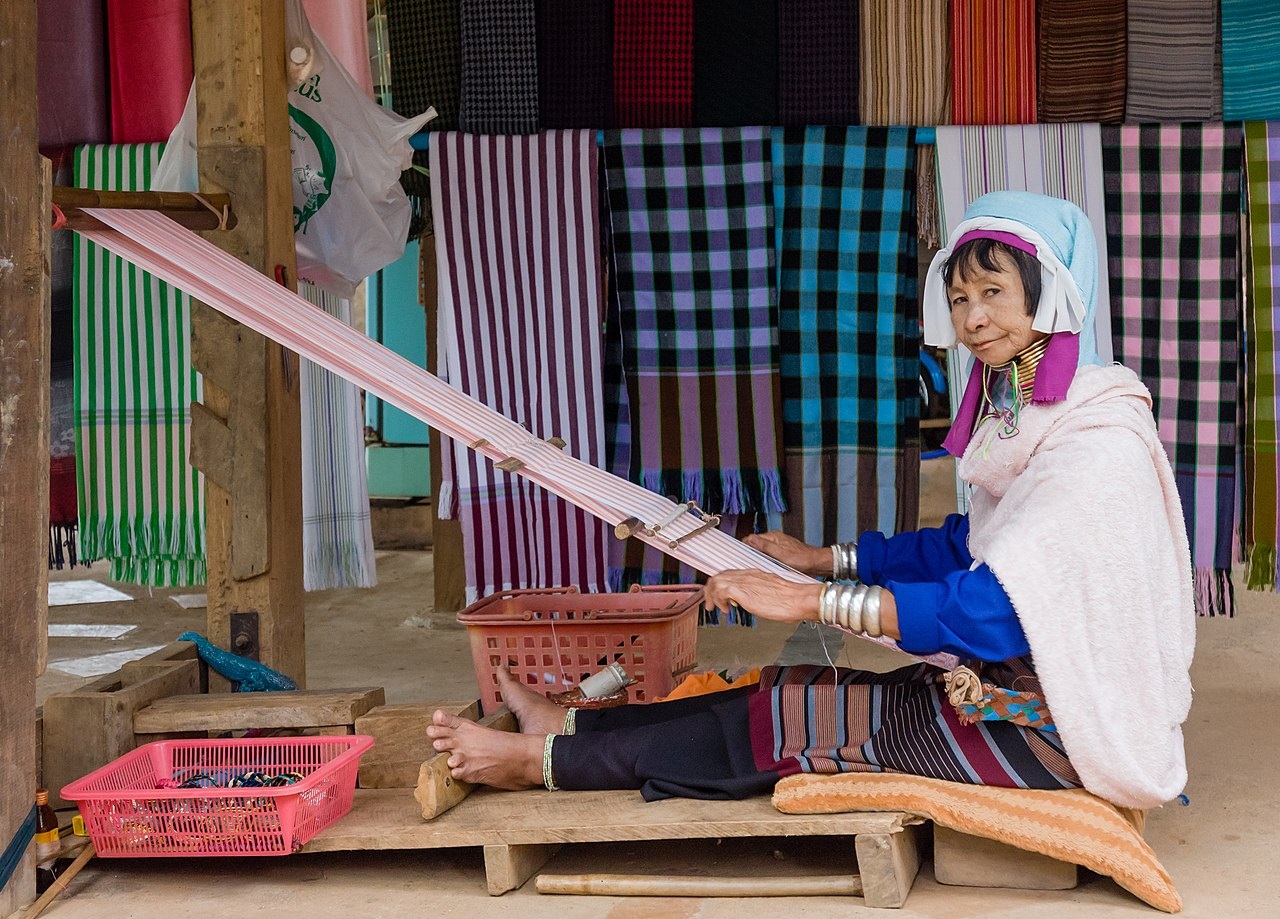 CEphoto, Uwe Aranas ,Wikimedia Commons
CEphoto, Uwe Aranas ,Wikimedia Commons
Kayan Shamans
Kayan Shamans are called "bomoh", and they hold a highly-respected position as spiritual leaders and healers. Their shamanic rituals involve communicating with spirits and using traditional herbal remedies to cure illnesses.
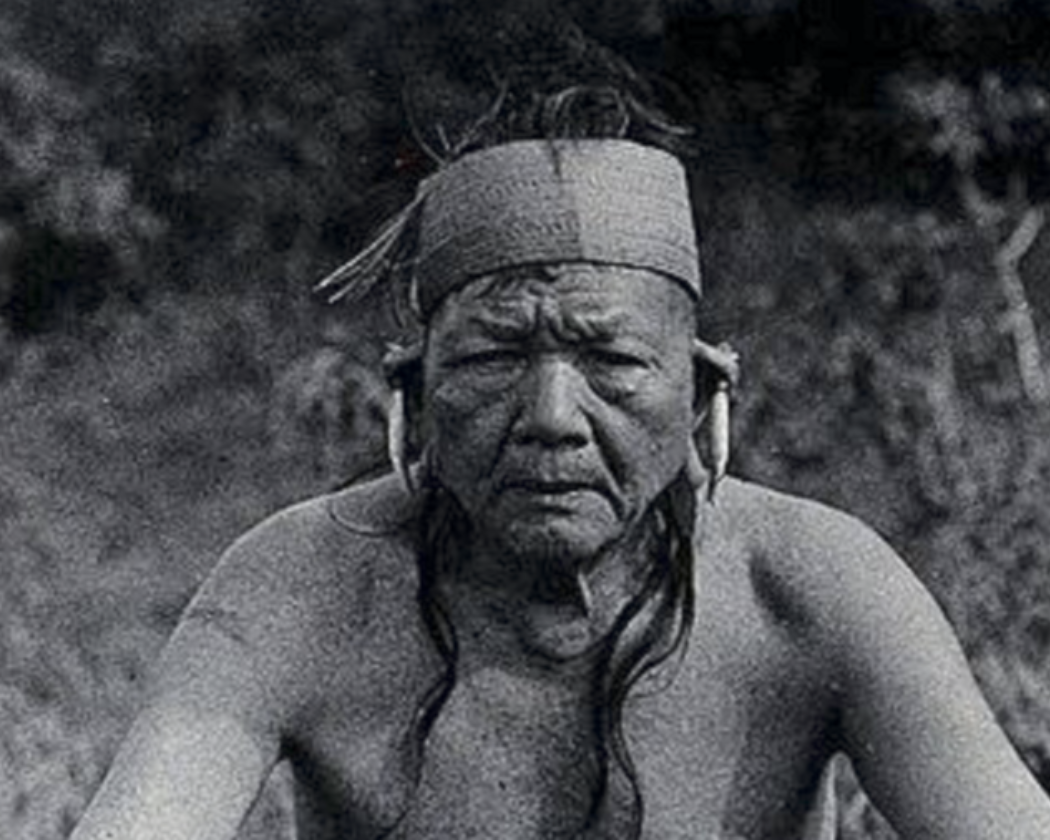 Wellcome Images, CC BY 4.0, Wikimedia Commons
Wellcome Images, CC BY 4.0, Wikimedia Commons
Their Burial Traditions
The Kayan people have unique burial traditions in which they place the deceased in elevated huts called "salong". These huts are about 10 meters high.
The Council Of Elders
Traditional Kayan villages are governed by a council of elders. Important decisions about a community are made collectively by the elders, based on consensus.
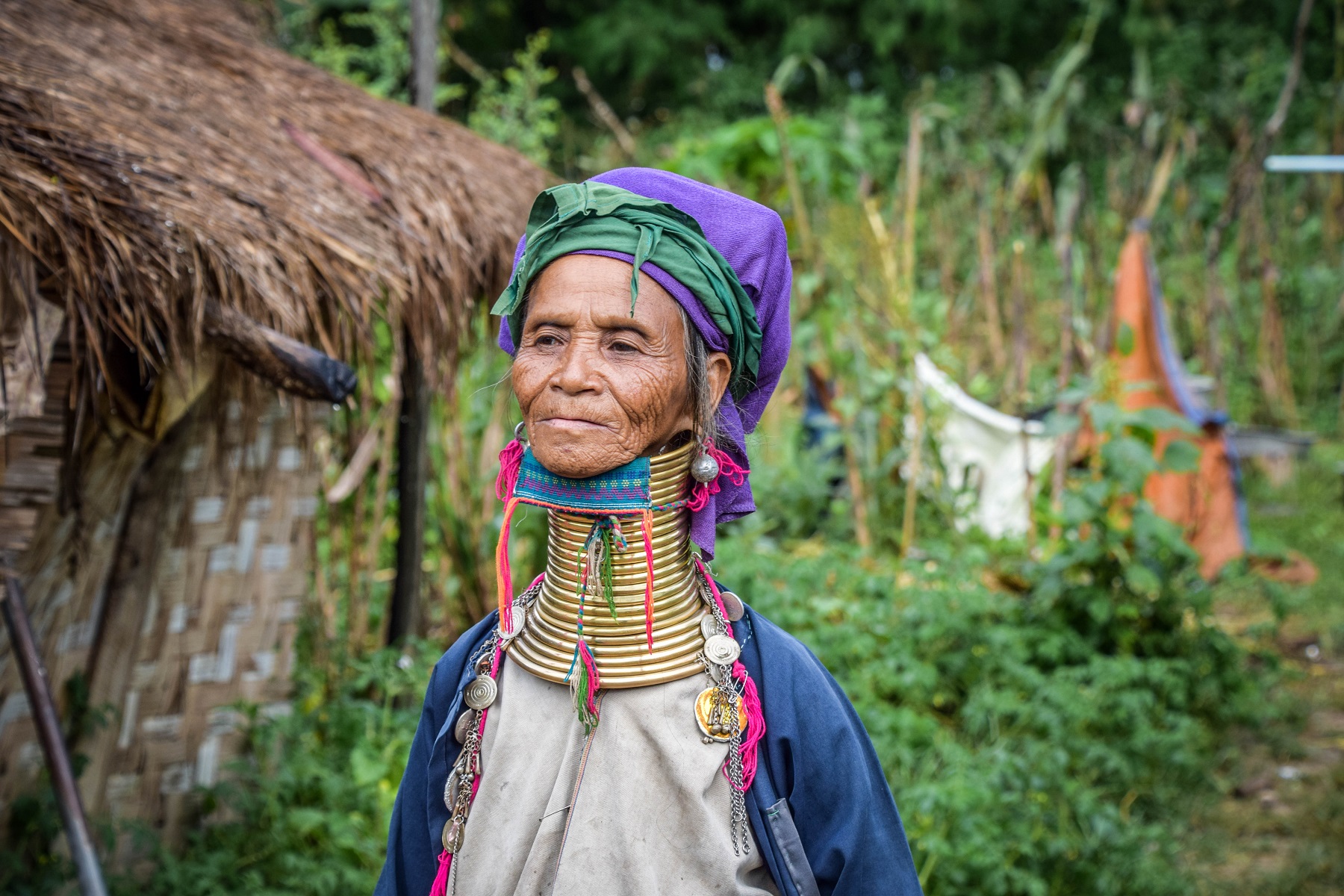 Jakub Specjalski, Shutterstock
Jakub Specjalski, Shutterstock
The Importance Of Kiau
The Kayan value the concept of "kiau," which emphasizes community responsibility and helping one another. This concept fosters a supportive environment where individuals actively contribute to the well-being of the entire community.
What Language Do They Speak?
The Kayan people speak various dialects of Padaung Kayan. Each dialect reflects the unique history and geographical location of different tribes.
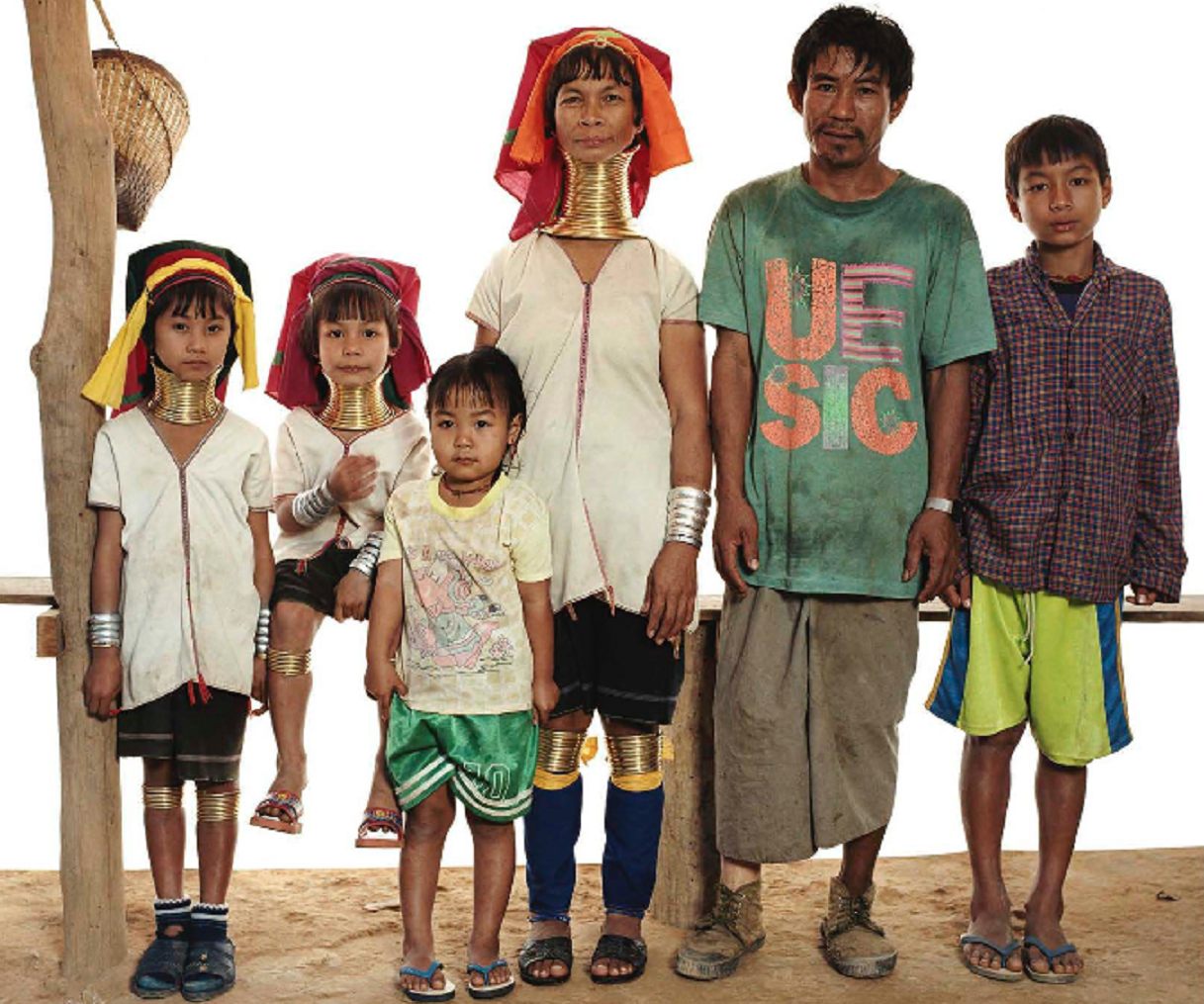 Uwe Ommer, CC BY-SA 4.0, Wikimedia Commons
Uwe Ommer, CC BY-SA 4.0, Wikimedia Commons
The Kayan In The 21st Century
As is often the case, the industrialization of the 21 century has led to the Kayan having more interactions with outsiders.
To try and find a balance between maintaining their cultural heritage and fitting into the modern world, many Kayan have become reliant on tourism—which isn't always a good thing.
The Dark Side Of Tourism
Today, the Kayan’s traditional neck coils have become a point of fascination for tourists. While many of the Kayan women in Myanmar have given up the tradition, in part due to the government’s discouragement, those in Thailand are starting to revitalize the practice.
The neck coils bring tourists to the remote Kayan villages—and with tourists, comes money. The entry fee can range from 500 to 600 baht (about $15-$18 USD) per person. But there is a downside to all the attention from outsiders.
 Joe mon bkk, CC BY-SA 4.0, Wikimedia Commons
Joe mon bkk, CC BY-SA 4.0, Wikimedia Commons
The Dark Side Of Tourism
While tourism has become a steady source of income for Kayan villages, interacting with rude or arrogant visitors takes its toll on Kayan women.
People taking pictures without their permission, getting uncomfortably, or treating them like they’re “primitive” has led many Kayan women to feel that tourists perceive them like zoo animals to be ogled at, rather than living, breathing people—and the UN agrees with them.
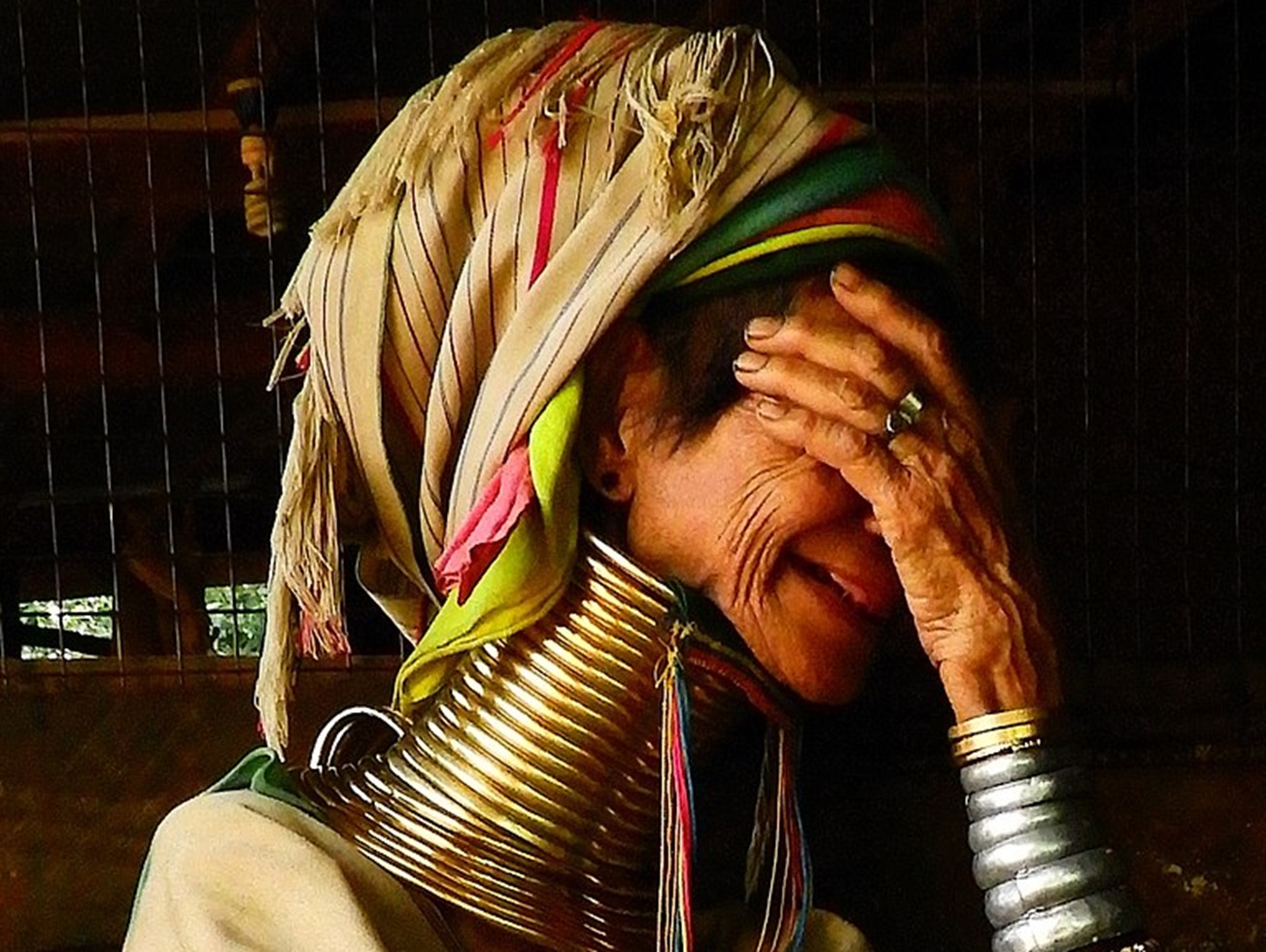 MarenHumburg, CC BY-SA 4.0, Wikimedia Commons
MarenHumburg, CC BY-SA 4.0, Wikimedia Commons
The Dark Side Of Tourism
The United Nations Refugee Agency (UNHCR) made a claim that Thailand was preventing a group of Kayan Lahwi from leaving the country because of their importance to tourism, effectively trapping them in a “human zoo”.
The UNHCR also alleged that when the Kayan first crossed the border, fleeing from Myanmar, families that practiced neck coils were separated from the other Kayan refugees and sent to live in designated villages that would make it easier for tourists to visit them.
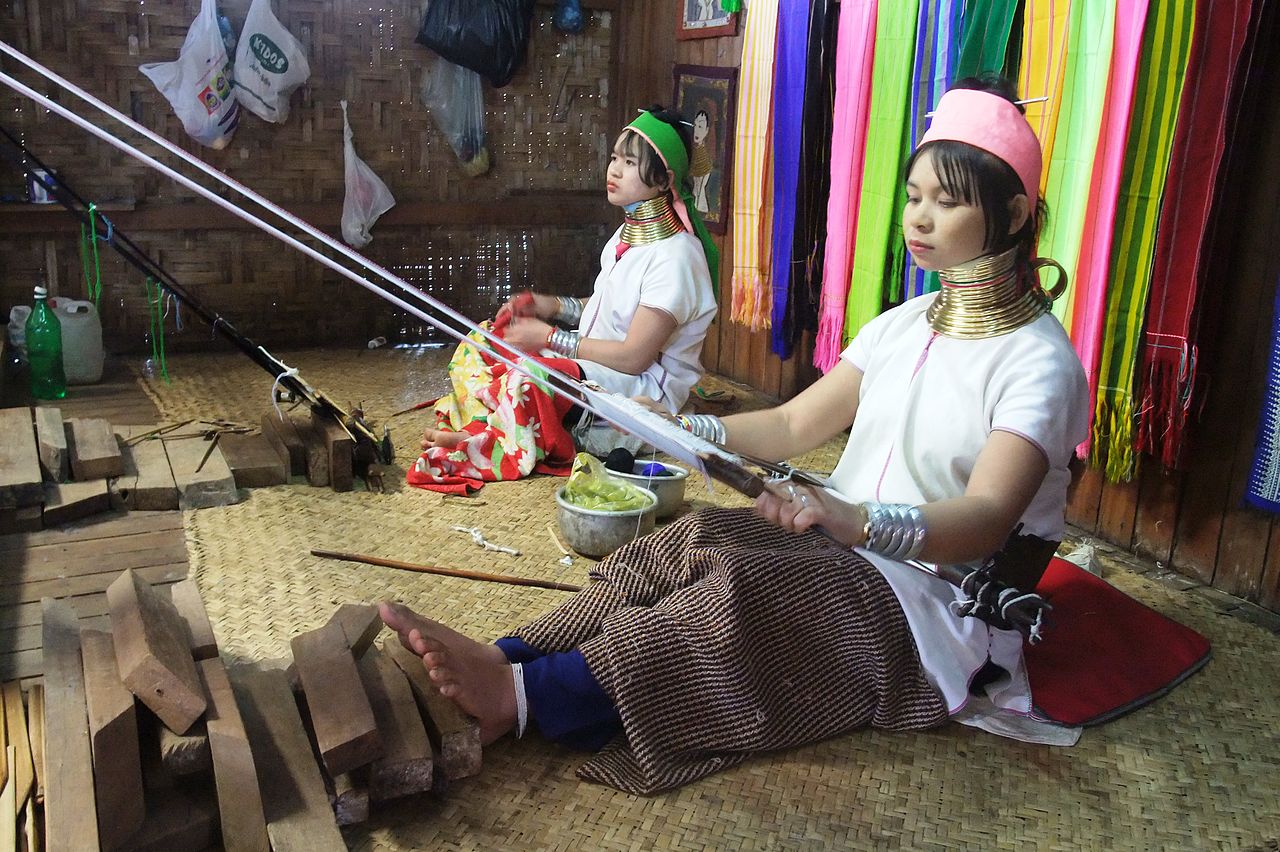 Thomas Schoch, CC BY-SA 3.0, Wikimedia Commons
Thomas Schoch, CC BY-SA 3.0, Wikimedia Commons
Life In The Union Of Hill Tribe Villages
Worse than just segregating the Kayan Lahwi, the Thai government is alleged to have also separated families. It was noticeable that the Kayan in the tourist villages were mostly women—this is because the government know the neck coils are the main attraction for visitors, so they sent most of the men away.
Sadly, it was not uncommon for the women to be mistreated by their “employers” running the camps.
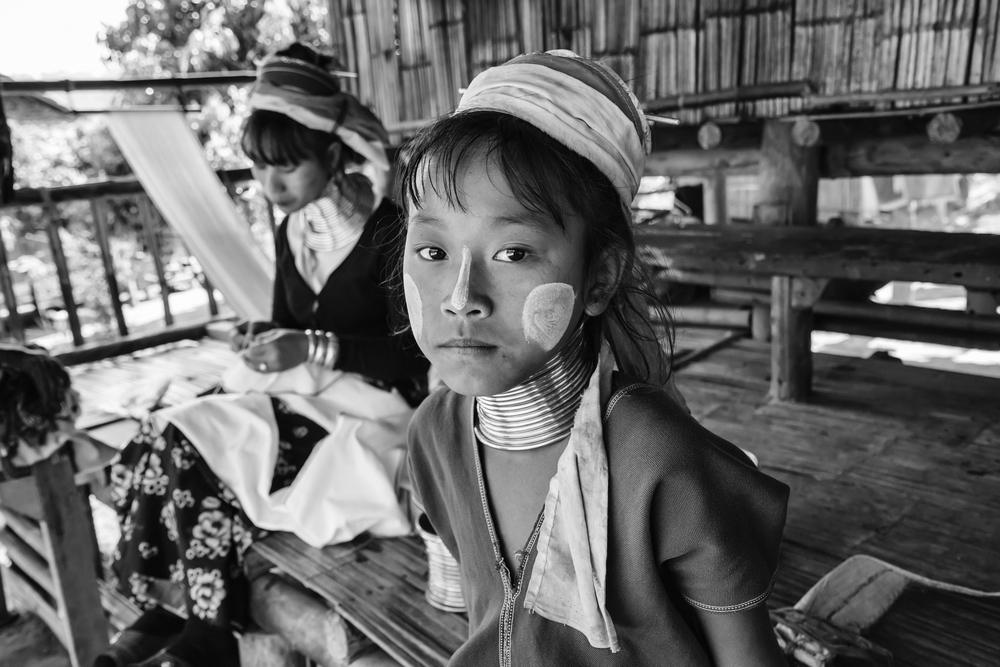 Angelo Giampiccolo, Shutterstock
Angelo Giampiccolo, Shutterstock
Life In The Union Of Hill Tribe Villages
The UNHCR may have been right about the Thai government’s motives for accepting Kayan refugees. Those small villages are still operational.
Now called the Union of Hill Tribe Villages, the five villages offer tourists a chance to see several different Indigenous tribes, including the Kayan Lahwi, in their traditional clothes and purchase authentic Kayan souvenirs. Unfortunately, the government takes much of the money from entry fees.
Life In The Union Of Hill Tribe Villages
Not all Kayan are averse to tourists. In 2018, filmmaker Marko Randelovic released a short movie about the Kayan. In it, Mu Tae, a Kayan woman, invites tourists to come and see the Kayan way of life in the villages.
Mu Tae says that the tourist visits help the Kayan make a decent living, and that they fair far better in the Union of Hill Tribe Villages than in Myanmar, where the tribe no longer has lands or a consistent way of making money.
Visiting The Union Of Hill Tribe Villages
While the UNHCR advised tourists to stop visiting the Kayan Lahwi at the Union of Hill Tribe Villages, the allure of the neck coils and easy accessibility of the villages has kept up a steady flow of visitors. Yet the experience may not be quite what visitors expect.
Visiting The Union Of Hill Tribe Villages
Many tourists have reported that Union of Hill Tribe Villages feel very manicured, and there’s not much to do except buy souvenirs or sit in the gardens. It's good for a short visit, but certainly not the day-long excursion most people seem to expect.
A Better Way To Visit The Kayan
If you are planning a trip to one of the Kayan villages, make sure to be on your best behavior and treat the people with respect—you are, after all, a visitor in their home. If you do choose to visit the Union of Hill Tribe Villages, be sure to purchase some souvenirs as the Kayan can keep all the proceeds from those sales.
Keep in mind, there's also a much more exciting—and ethical—way to see the Kayan.
A Better Way To Visit The Kayan
If you want to see the Kayan, skip the Union of Hill Tribe Villages and head over to one of the three Kayan villages in Mae Hon Song. The Huay Pu Keng village has become a favorite among visitors in recent years, offering a chance to meet Kayan families and experience their culture in an authentic way.
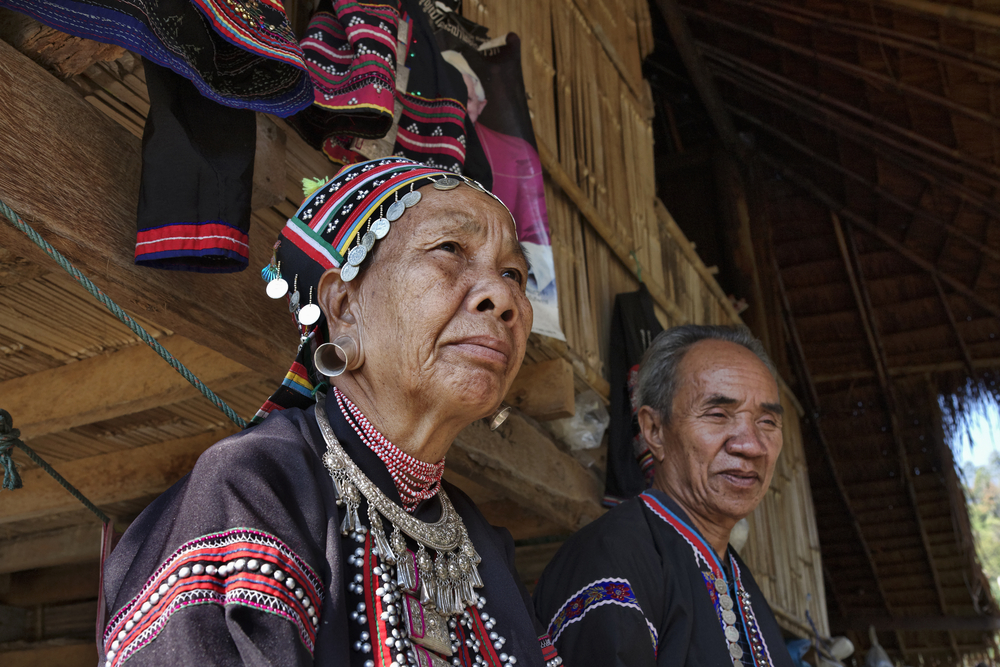 Angelo Giampiccolo, Shutterstock
Angelo Giampiccolo, Shutterstock
Kayan Longhouses
Many Kayan people still live in longhouses. These communal dwellings can house multiple families under one roof. They can be up to a kilometer long, and if you happen to visit one of the traditional Kayan villages, you may get a chance to sleep in one. Otherwise, you'll probably be put up by a friendly local family.
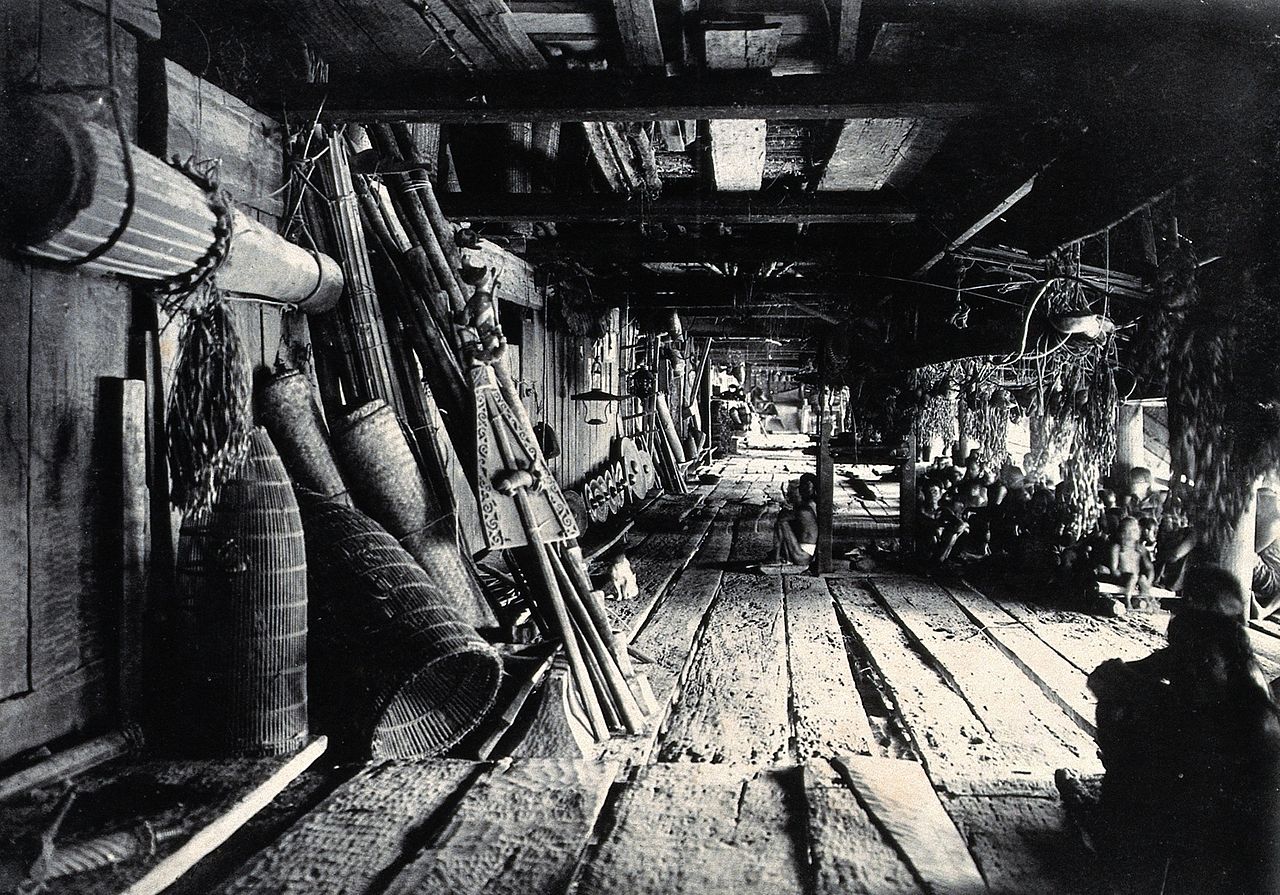 Wellcome Images, CC BY 4.0, Wikimedia Commons
Wellcome Images, CC BY 4.0, Wikimedia Commons
Preserving Their Culture
Despite the double-edged sword that is tourism, the Kayan have made efforts to document and preserve their cultural knowledge.
Many Kayan communities are involved in educational initiatives, including recording their oral histories, documenting traditional practices, and promoting cultural awareness to outsiders and tourists.
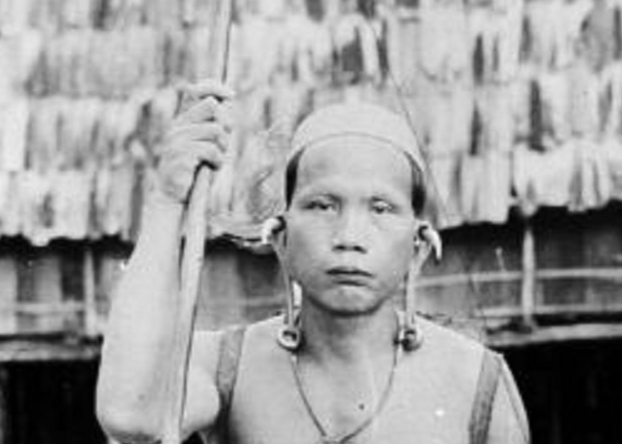 Tropenmuseum, CC BY-SA 3.0, Wikimedia Commons
Tropenmuseum, CC BY-SA 3.0, Wikimedia Commons
The Role Of Kayan Youth
Kayan youth are playing a big role when it comes to preserving their cultural heritage. Young Kayan are at the forefront of many of the educational initiatives that seek to encourage positive interactions with tourists and record the oral traditions of Kayan communities.
The Origin Of Neck Coils
Let's go back to the Kayan people's neck coils. A more practical reason for wearing the coils may have been to protect against tiger bites.
But if you ask most Kayan women, the true reason is simple: They wear the coils because it shows their cultural heritage and makes them look pretty.
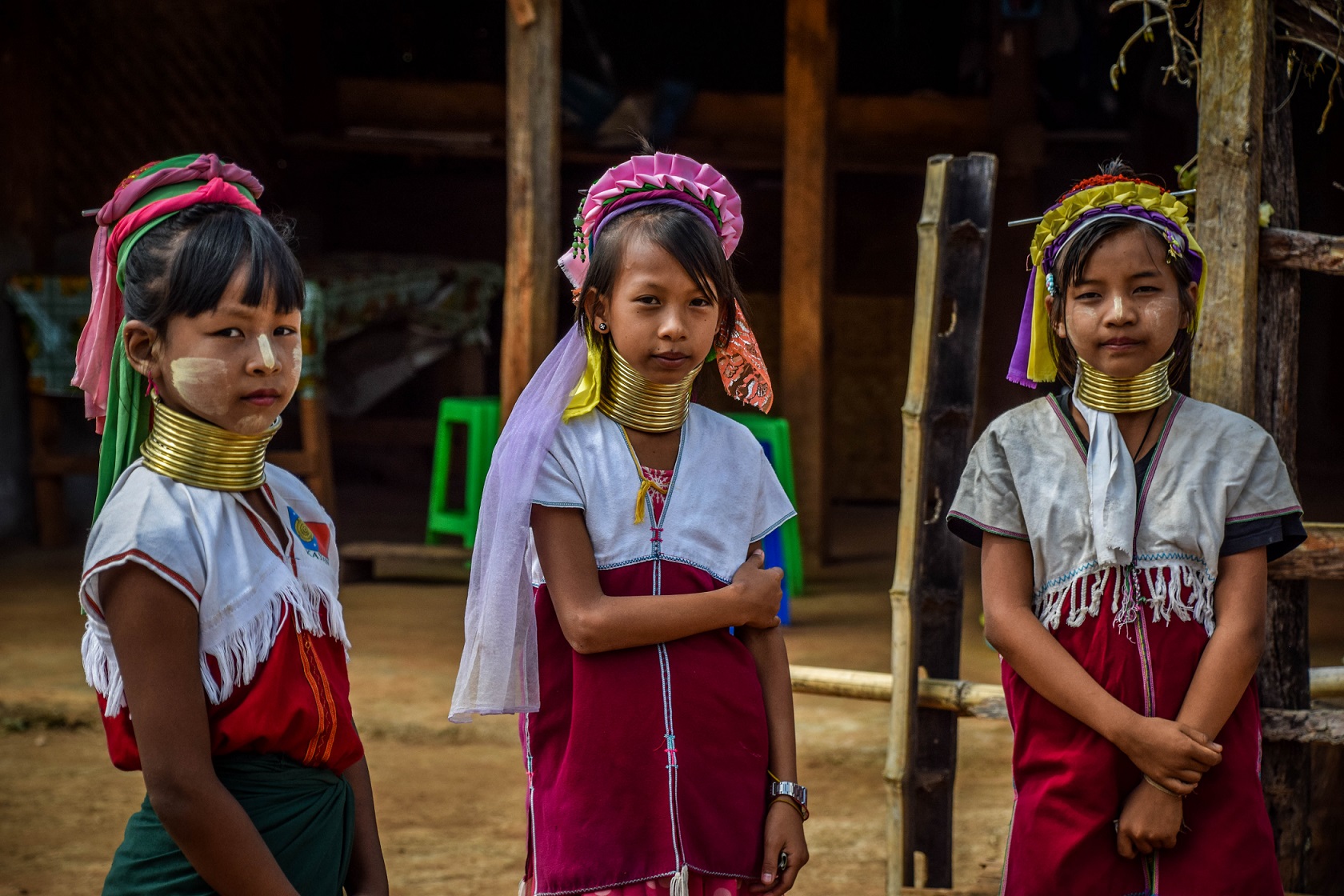 Jakub Specjalski, Shutterstock
Jakub Specjalski, Shutterstock
Final Thoughts
The Kayan people continue to captivate the world's imagination. From the iconic long-necked women to their intricate arts and rituals, they've found a way to balance their ancient traditions with the challenges of the modern era.
Their cultural heritage is not just a relic of the past or something for tourists to ogle at. Rather, it is a testament to the strength and spirit of Indigenous communities in the face of extreme change and adversity.

